11. Dinosaurs and Dragonflies
Life Evolves and Thrives According to its Environment
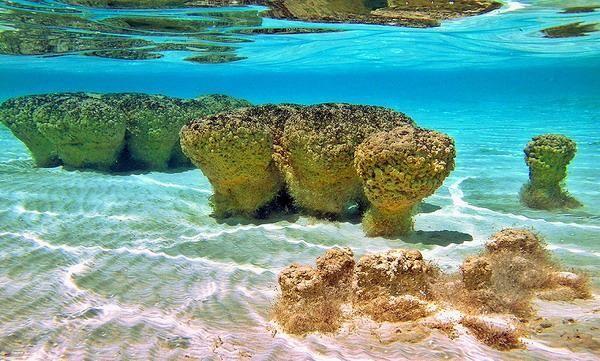
These Stromatolites found in Western Australia are believed to be one of the first forms of life on
Earth.
(Western Australia Now and Then)
Three-and-a-half-billion-year-old fossilized microorganisms and stromatolites provide evidence of the single-celled life that evolved not long after Earth's formation. Over billions of years, these organisms developed increasing complexity until, around 541 million years ago, they reached the next major evolutionary milestone: multicellular life. This sudden emergence, known as the Cambrian Explosion, marks the beginning of the Phanerozoic Eon. These early multicellular organisms were marine plants and animals, while terrestrial animals did not appear until 100 to 200 million years later.
This chapter explores the relationship between Earth’s changing atmosphere and the evolution of species. The search for an explanation of how dinosaurs and pterosaurs grew so large led to the realization that the atmosphere has changed significantly over time. This and other paradoxes arose from the long-held assumption that Earth’s atmospheric conditions remained relatively stable. Recognizing the dramatic shifts in atmospheric thickness allows us to resolve these mysteries. While these changes influenced both marine and terrestrial life, their effects were most evident in land-dwelling species, which existed directly within the atmosphere.

Dear Harry Potter fans, please do not mistake this dragonfly for the golden snitch.
Species evolve to occupy ecological niches, which are shaped by both physical and biological constraints. Fossils provide evidence of the environments in which these species lived, often revealing clear reasons for their success. However, some organisms exhibit puzzling traits that suggest deeper evolutionary and environmental influences. Nature offers endless scientific mysteries, but most can be solved by assuming a rational explanation exists.
By analyzing fossil evidence, we can infer past atmospheric conditions and, in turn, better understand the adaptations of species that lived during those periods. In addition to physical constraints, species must also compete with one another for survival, adding another layer of complexity to their evolution. Solving scientific paradoxes requires an open mind—one that embraces evidence rather than dismissing it when it challenges existing assumptions.
DinosaurTheory originated from the idea that the enormous size and unique form of dinosaurs and pterosaurs reflect their environmental conditions. Geological and fossil evidence strongly suggests that Earth had an extremely thick atmosphere during the Mesozoic Era. Furthermore, records indicate that before the Mesozoic, the atmosphere was thin during the Permian—preceded by earlier periods of extreme atmospheric density. With this understanding, we can now reassess past life through the lens of atmospheric change, shedding new light on long-standing scientific mysteries.
Gigantic Insects, Millipedes, and Spiders Oh My
Carboniferous and Permian Periods, 360 to 245 mya
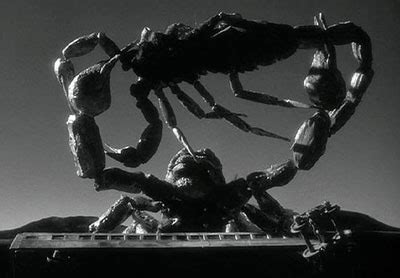
In the by-gone days of both the Carboniferous period and old science fiction movies millipeds, dragonflies, scorpions, and other arthropods were much larger than what they are today.
Dinosaurs and flying pterosaurs are not the only giant oddities of the prehistoric world. About 400 million years ago, long before dinosaurs and other vertebrates, the first arthropods crawled out of the water and onto land. Many of these creatures soon grew to sizes far exceeding most arthropods we see today.
During the Carboniferous period, an early centipede or millipede known as Arthropleura reached lengths of up to 2.6 meters. The same period was home to Pulmonoscorpius, a 70-centimeter-long air-breathing scorpion, and Meganeura, a dragonfly-like predator with a wingspan of 70 centimeters. Of course, let’s not forget about giant cockroaches—these nasty insects were among the first to crawl on Earth, and they will likely still be here long after Homo sapiens are gone.
Why did late Paleozoic arthropods grow so much larger than those of today? It’s tempting to assume the same conditions that enabled the massive dinosaurs of the Mesozoic also drove arthropod gigantism, but the situation is more complex. The atmosphere was indeed extremely thick during the Carboniferous, just as it was in the Mesozoic, making these creatures feel lighter. However, weight was less of a limiting factor for arthropods, especially considering their multiple legs. As we will see, the thicker atmosphere played a role in their size, but it was not the only factor.

For more information on animal classification go to www.earthreminder.com
Recall from Chapter Four — The Solution to the Dinosaur Paradox — that both the physical and biological environment shape a species’ size, form, and behavior, and it is often difficult to determine which has the greater impact.
Other when terrestrial arthropods first evolved, they have always existed alongside much larger terrestrial vertebrates that often towered over them and preyed upon them. This aspect of their biological environment may have been as important—if not more so—than the physical environment shaped by atmospheric thickness. To better understand the significance of the biological environment, we need to compare terrestrial vertebrates and arthropods. What are the strengths and weaknesses of each group? Why are most terrestrial vertebrates much larger than the vast majority of arthropods? And how have terrestrial vertebrates limited the size of arthropods? Answering these questions requires a deeper understanding of terrestrial arthropods.
For aquatic animals to evolve into terrestrial animals, they must be able to stand and move on land. Arthropods and vertebrates solved this challenge in different ways: arthropods developed hardened exoskeletons to support their bodies, while vertebrates evolved bony internal skeletons. Structurally, placing the support frame on the outside makes sense—an external or hollow frame is stronger than a solid rod of the same weight in resisting bending or breaking. Additionally, unlike vertebrates, whose muscles and organs are exposed to potential injury, an arthropod’s rigid exterior acts as natural armor, protecting its internal organs from cuts and abrasions. Given these advantages, one might wonder why all animals aren’t built this way. However, for larger animals, the benefits of an exoskeleton diminish when we consider two critical factors: growth and respiration.
Bones are living tissue, meaning they continuously grow and rejuvenate throughout a vertebrate’s life, along with its other organs. In contrast, an arthropod’s exoskeleton is made of hardened chitin, calcium, and carbonate, and it cannot expand as the animal grows. To accommodate growth, an arthropod must periodically shed its old exoskeleton and wait for a new, larger one to harden—a process called molting. Most insects molt five to seven times during their lives.
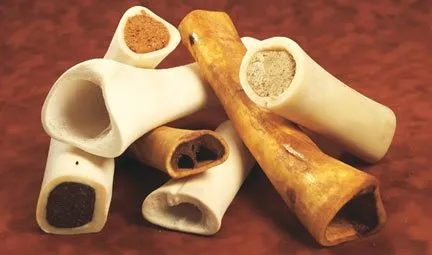
For the same amount of weight, a thick tube is far more resistant to bending and breaking than a solid rod. This principle explains why most of the limb bones in vertebrates lack dense bone material in their central regions. Structurally, we can extend this concept to compare vertebrates and arthropods. While the lightweight, internally structured bones of vertebrates provide excellent strength-to-weight efficiency, the hardened exterior shell of an arthropod is even more effective. This is because the structural material in an exoskeleton is positioned even farther from the central axis, maximizing strength and resistance to deformation.
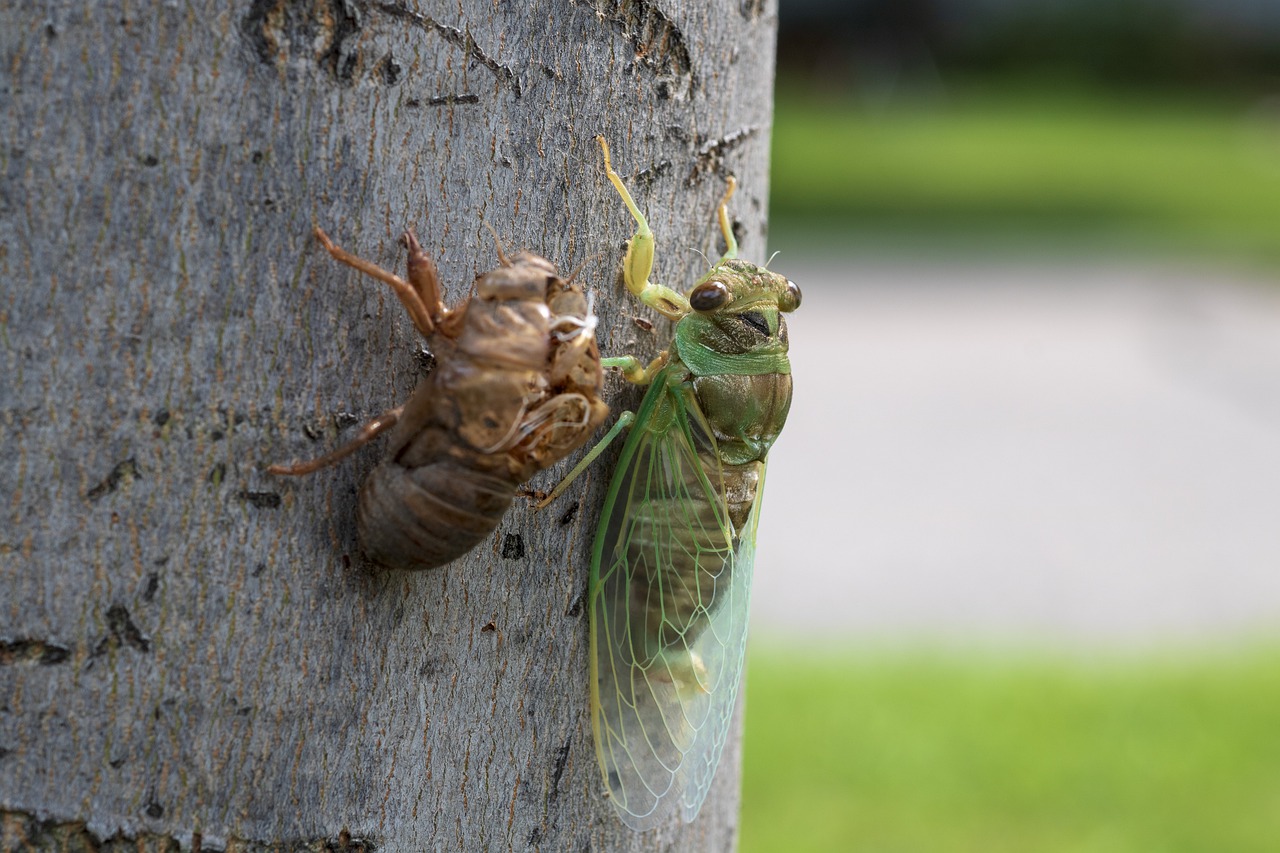
Cicada next to its shell after molting
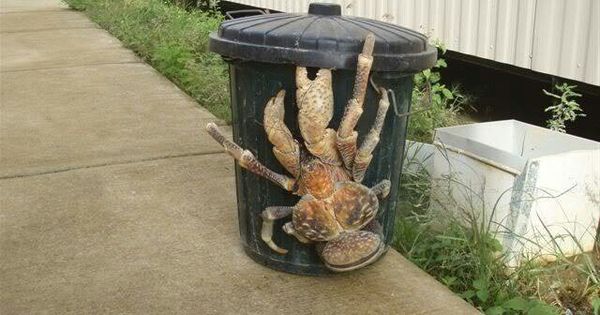
This is a deceptively small trash can in this photo, yet all the same the Coconut Crab really is a rather large arthropod.
Molting leaves arthropods temporarily without structural support, making them highly vulnerable. Predators may take advantage of this weakness, or unforeseen complications may arise, preventing the arthropod from successfully transitioning to its new exoskeleton. Unlike the steady, continuous growth of vertebrates, the dangers associated with molting cause many, if not most, arthropods to die before reaching adulthood.
This need to periodically molt imposes limitations on the size and shape of terrestrial arthropods. While weight is negligible for the smallest insects, it becomes a major limiting factor for larger species. Without structural support during molting, the bodies of the largest terrestrial arthropods tend to flatten out, much like a water balloon laid on a table, before hardening into their final shape. This explains the noticeably flattened form of the coconut crab—the world's largest terrestrial arthropod.
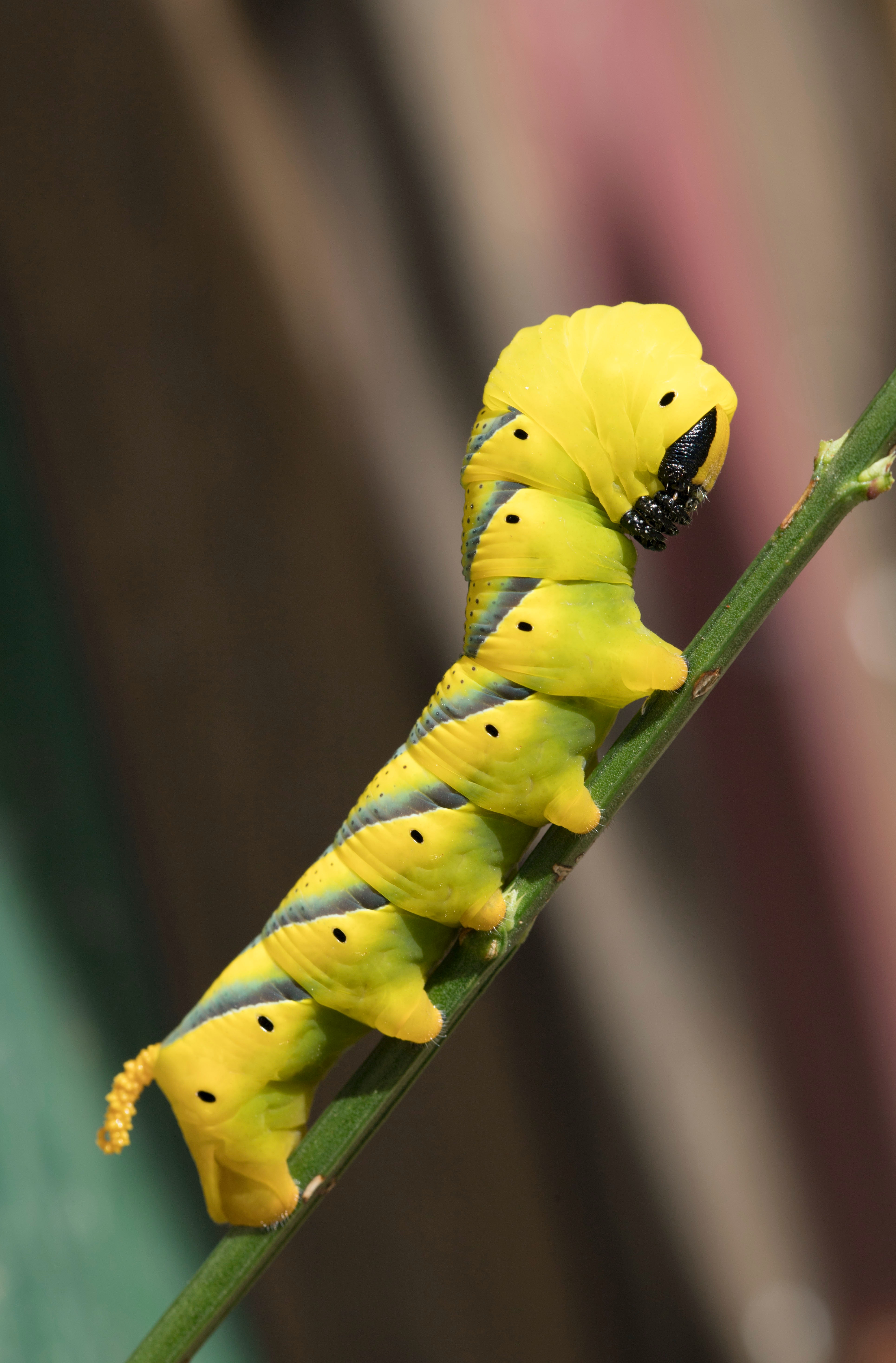
Caterpillar showing nine small black holes along its side that are spiracles
However, the greatest difficulty that arthropods face when growing large is their breathing system — or more precisely, the fact that they cannot breathe in the same way vertebrates do. While vertebrates expand and contract their chest to draw fresh air into their lungs and expel old air, arthropods cannot perform this expansion and contraction because their body is enclosed in a rigid exoskeleton. Instead, insects and other arthropods rely on a passive system to exchange oxygen and carbon dioxide with the atmosphere. This system consists of several openings, called spiracles, spread along the body, which allow air to enter. The oxygen then travels down air ducts called tracheae before diffusing into the cells. The cells take in oxygen while releasing carbon dioxide. As the oxygen travels through the tracheae, the carbon dioxide travels in the opposite direction to exit the arthropod’s body.
This passive system works well for small insects but becomes inefficient for larger arthropods. It is another example of the Square-Cube Law. As an arthropod grows larger, the volume of its body increases at a faster rate than the surface area of the spiracle openings that supply oxygen from the atmosphere. To make matters worse, the larger the arthropod, the farther oxygen must travel through the tracheae to reach the cells. As a result, the exchange of oxygen and carbon dioxide slows down significantly in larger terrestrial arthropods. This slower rate of oxygen intake leads to reduced cellular metabolism, causing the animal to move more slowly. Hence, larger terrestrial arthropods are much slower than smaller ones.
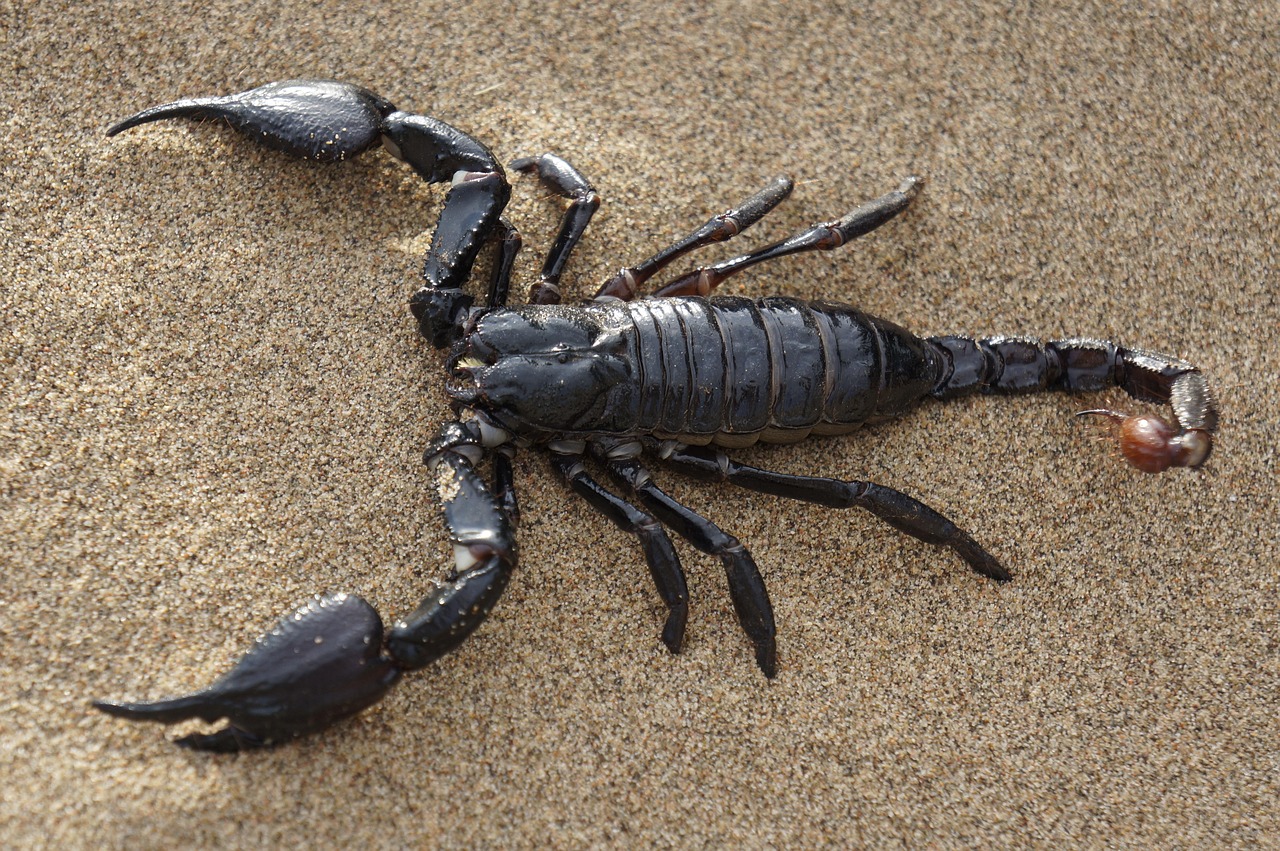
Despite their deadly stingers, scorpions are prey to small, fast vertebrates like meerkats, shrews, and grasshopper mice, which see them as a tasty meal rather than a threat.
Speed can be crucial for survival. In a race between a carnivore and its prey, the winner often determines who will survive. Additionally, in a confrontation between two predators, the victor is usually the one who can deliver faster, fatal blows. Generally, as vertebrates grow larger, their increase in overall speed and strength more than compensates for any slight decrease in reflexes, making them more likely to win a conflict. However, for large terrestrial arthropods, the inefficiency of their respiration system means they are typically too slow to win a confrontation with a vertebrate of equal or greater size. In environments where both terrestrial arthropods and vertebrates coexist, evolution favors smaller arthropods that are more capable of surviving, rather than larger, slower ones that cannot defend themselves, escape quickly, or hide from vertebrates.
To better understand how terrestrial arthropods grow to such large sizes, we can look at the largest arthropods of today and compare them to those of the past. While most terrestrial arthropods are small, there are some regions of the world where insects and other arthropods grow to impressive sizes. However, even the largest modern arthropods are dwarfed by those from the Carboniferous period. The reasons behind the large size of both modern and ancient arthropods are largely similar: changes in atmospheric conditions or the absence of vertebrate predators.
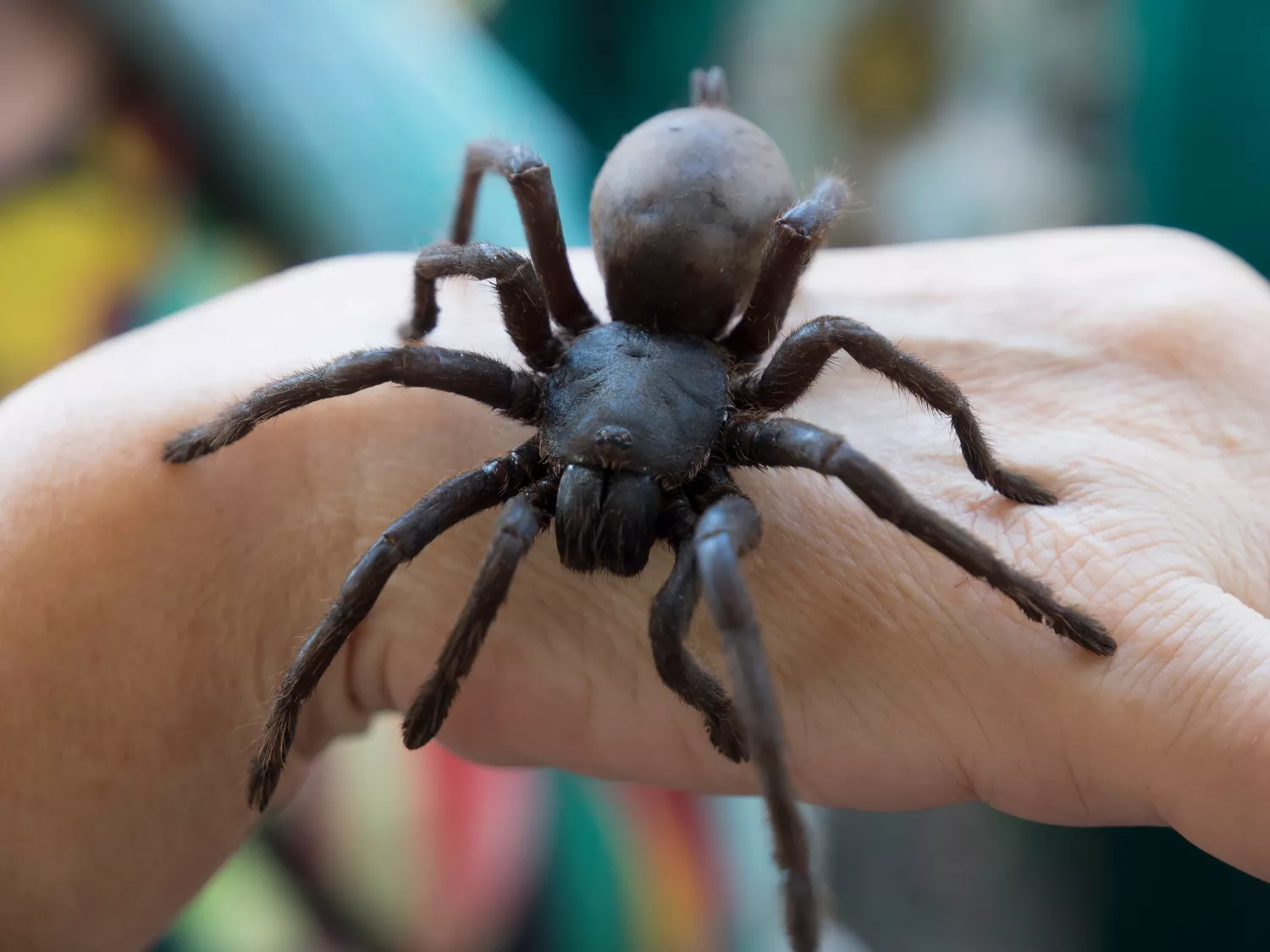
At 12 inches across and a mass of 175 grams the Goliath Birdeater is the world's largest spider. It lives in
rainforests and swamps of South America.
Antonio Alba / EyeEm / Getty Images
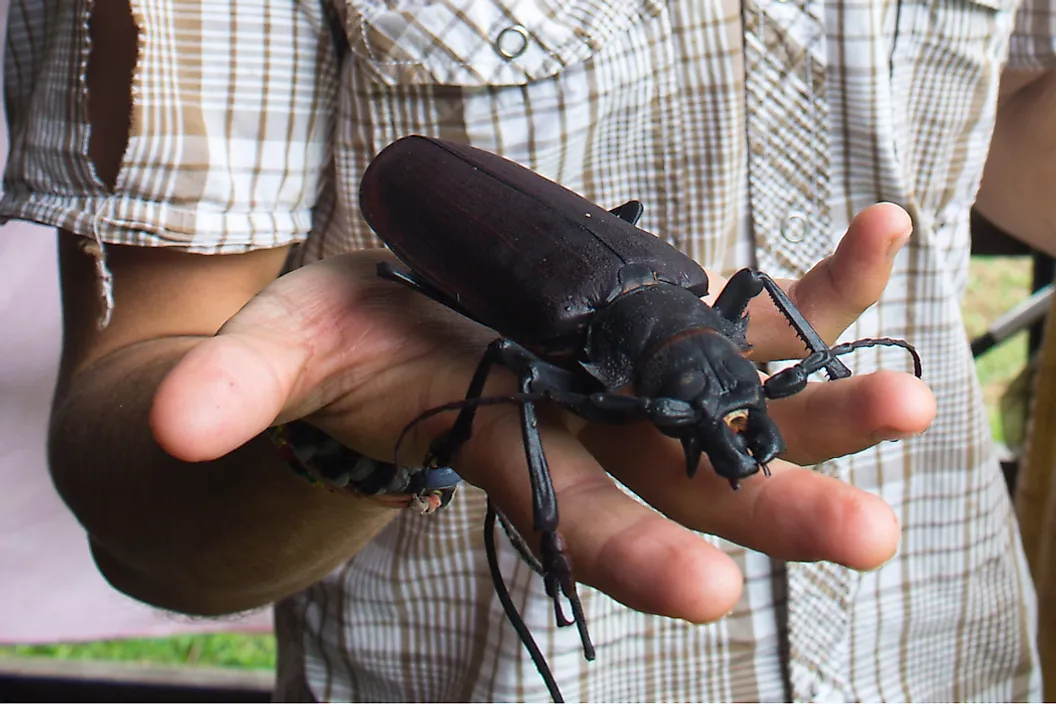
The Titan Beetle grows up to 6.6 inches long and it lives in the Amazon rain forest.
Ramukanji / Shutterstock.com
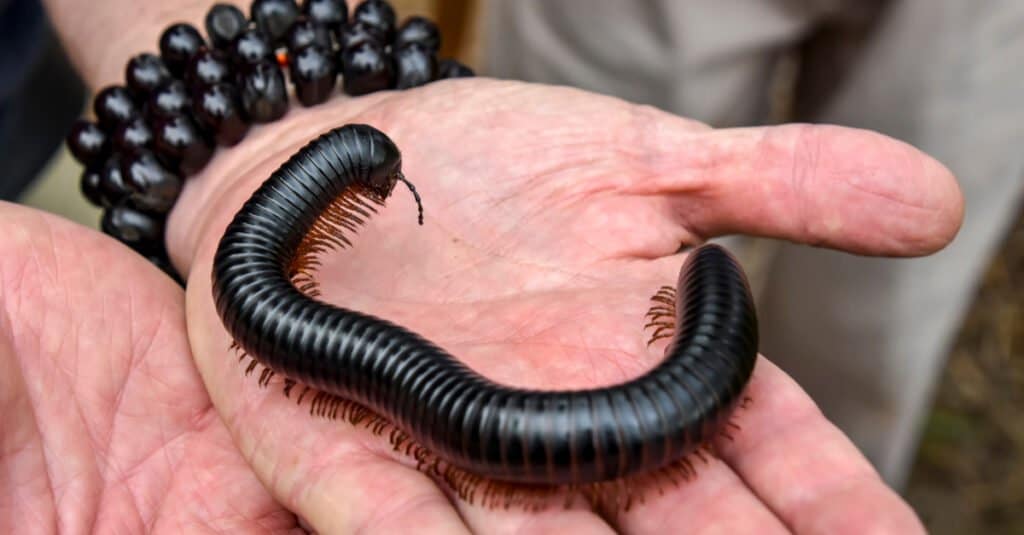
The African Giant Black Millipede can grow to being up to 15 inches long and yet it is still six to seven times
smaller than the millipedes of the Carboniferous period.
Wandel Guides/Shutterstock.com
Many of today’s largest arthropods — such as insects, millipedes, and spiders — are found in isolated environments like islands, caves, deserts, and tropical rainforests. In these regions, the environment provides conditions that support larger sizes. In particular, the humid environments of places like the Amazon, Southeast Asian rainforests, and the Congo basin play a significant role. The high humidity in these areas enhances the efficiency of the arthropods' respiratory systems. Although their atmosphere is not denser than usual, the humidity helps by creating a thin layer of water over the tracheae, aiding the diffusion of gas molecules. This boosts the effectiveness of their passive respiratory system, allowing for better oxygen absorption and enabling these arthropods to grow larger than those in less humid environments.
Thus, there are three key factors that support the growth of large terrestrial arthropods: a dense atmosphere that makes them feel lighter, high humidity that facilitates gas exchange, and the absence of vertebrate predators, which typically limit the size of arthropods. The giants of the Carboniferous period were likely able to grow so large because they enjoyed all three of these advantages: a dense atmosphere, high humidity, and the absence of large vertebrate predators. In fact, the atmosphere during the Carboniferous period was not only thick but likely humid as well, thanks to the swampy vegetation responsible for creating coal. This would have created an environment highly conducive to large arthropod growth. Furthermore, vertebrates did not evolve onto land until the Permian period, meaning the Carboniferous arthropods faced little threat from predators.
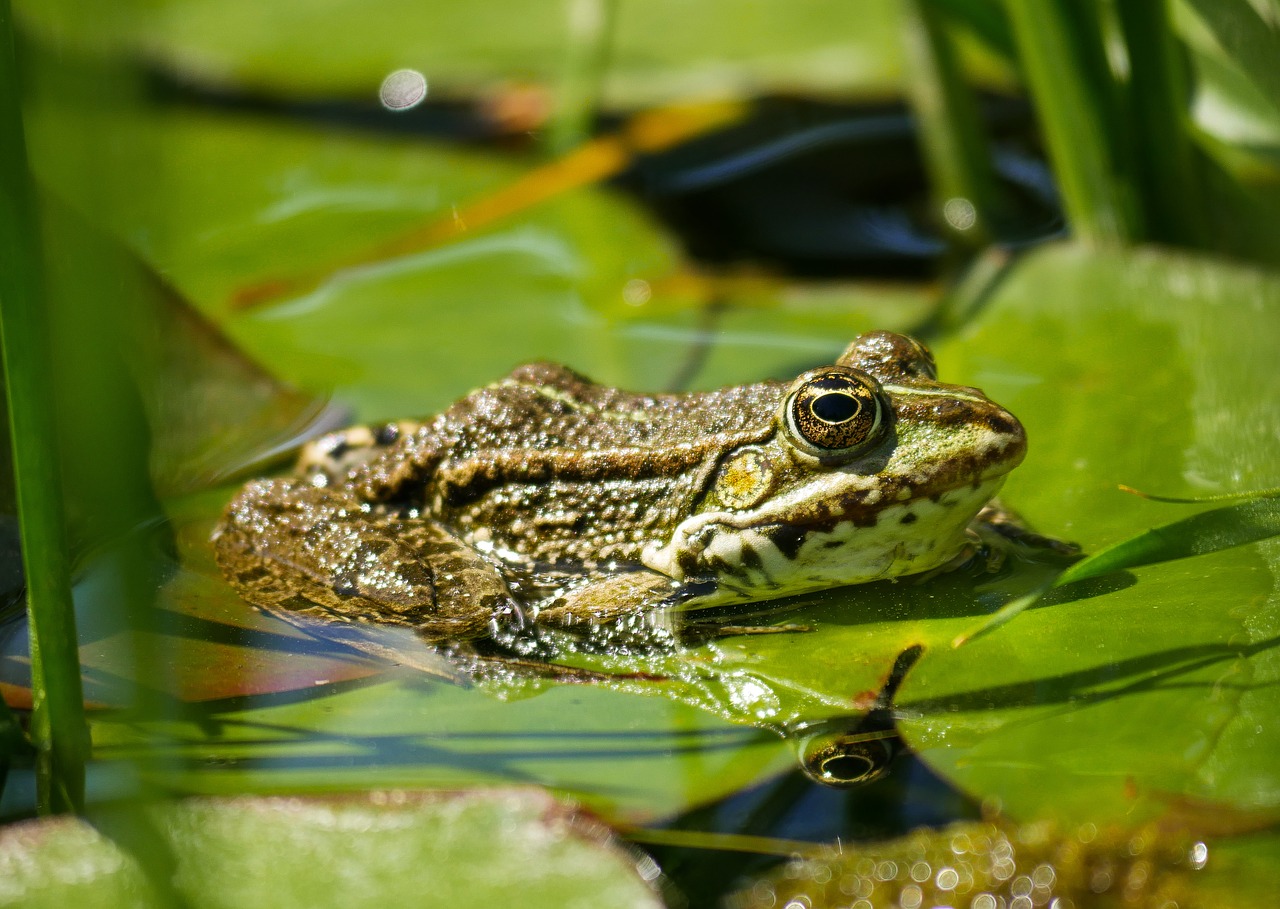
Here is a frog looking up at the "pie in the sky."
If you can’t fly, the next best thing is to evolve a long, sticky tongue. During the Permian period, there were no flying vertebrates to
prey on insects, so the swamps must have been buzzing with swarms of flying invertebrates.
The age of giant terrestrial arthropods lasted for many millions of years, but significant changes began during the Permian period. Vertebrates were evolving onto land. The first amphibians, which evolved from fish, must have seen the abundant, slow-moving terrestrial arthropods as a ready source of food. Many of the giant arthropods were wiped out by these amphibians, but some still survived, as amphibians were limited to the marshes and swamps. This situation changed, however, when reptiles evolved from the amphibians. By the end of the Permian period, amphibians and reptiles had effectively wiped out the giant crawling arthropods. The only giant arthropod to survive was Meganeura, a massive ancestor of today's dragonflies, which continued to fly overhead.
So, why did Meganeura remain giant while all other giant arthropods shrank? The answer lies in the absence of flying vertebrates during the Permian. Flying vertebrates, such as pterosaurs and birds, did not evolve until the late Triassic and late Jurassic periods, respectively. As a large carnivorous insect, Meganeura filled the ecological role of present-day birds, preying on smaller insects. Without vertebrate predators in the air, Meganeura could continue to grow large and thrive.
Flying vertebrates evolved in stages: pterosaurs appeared in the Triassic period, birds evolved in the late Jurassic, and bats, the flying mammals, evolved in the early Cenozoic era. Today, birds and bats play a critical role in controlling insect populations. Birds are particularly effective during the day, and at night, bats take over, eating many of the insects that are active in the dark. If vertebrates had never developed the ability to fly, our world would be very different, with far fewer checks on insect populations.
As a closing thought, let us consider why arthropods were so far ahead of vertebrates in conquering new environments.
Ironically, the primary reason that the terrestrial arthropods of the Carboniferous period were able to grow so large is because they started out so small. Unlike vertebrates, there is virtually no limit to how small arthropods can be. In fact, there are countless invertebrate species that are microscopic. From an evolutionary standpoint, smaller individuals have shorter generation cycles, which allows species to evolve more quickly into new forms. This ability to evolve rapidly gave arthropods a significant advantage over vertebrates as they adapted to terrestrial life.
Once arthropods successfully evolved to live on land, the terrestrial environment was essentially theirs alone. Without competition from vertebrates, they were free to grow larger and fill all the ecological niches available. Whether evolving to live on land or to fly, arthropods were tens of millions of years ahead of vertebrates in these key evolutionary steps.
The Evolution of Flight: How Evolution Works
There is no mystery in how insects evolved the ability to fly. A slight breeze is enough to lift most small, lightweight insects into the air. In fact, from the perspective of a tiny insect, the greater challenge is staying grounded. What we consider a gentle breeze or a slightly windy day must feel like a hurricane to them. While many insects seek shelter from the wind, others may have benefited from using it to expand their range. From there, only a series of small evolutionary steps was needed to develop controlled flight.
For small animals, evolving flight is relatively easy, and insects demonstrate this with the remarkable variety of ways they have achieved powered flight. In contrast, the evolution of flight in vertebrates has long been a scientific puzzle. The key to understanding this puzzle lies in two factors: (1) smaller organisms, such as arthropods, evolve much faster than larger ones, and (2) the Earth's atmosphere during the Permian period was thinner than it later became, making the evolution of vertebrate flight significantly more difficult.
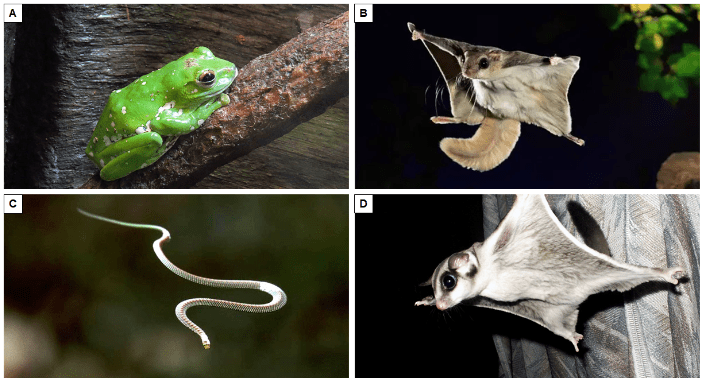
Examples of living gliding vertebrates: A) Chinese flying frog, B) Southern flying squirrel, C) Flying paradise snake, D) Sugar glider. Figure created by Manning, 2020. Images: D. Gordon E. Robertson; Kim Taylor; The Daily Conversation; Remon Knaap.
Before exploring these factors, it is important to clarify what it means to fly. Today, many vertebrates have "flying" in their name—such as flying dragons, flying snakes, flying fish, flying squirrels, flying lemurs, and flying geckos — yet none of these animals are true flyers; they are gliders. To fly, an animal needs more than just wings or a flat surface to slow its fall — it must generate enough power to propel itself forward and maintain level flight. Airplanes make this distinction clear: they require both wings for lift and a propulsion system, such as a jet engine or a propeller, for forward motion. Birds and other flying animals achieve both through the flapping of their wings, which requires considerable muscular power output.
Evolution does not follow a predetermined plan. A species cannot "aim" toward flight simply because flying offers many advantages. Instead, evolution is driven by immediate benefits. A species will only evolve new traits if each small step along the way provides an advantage in survival or reproduction. Furthermore, evolutionary change occurs gradually, with each new generation offering another opportunity to take a small step toward developing a new feature. If a partial feature — such as rudimentary wings — does not provide any benefit, it will not be selected for, and the evolutionary process will stall.
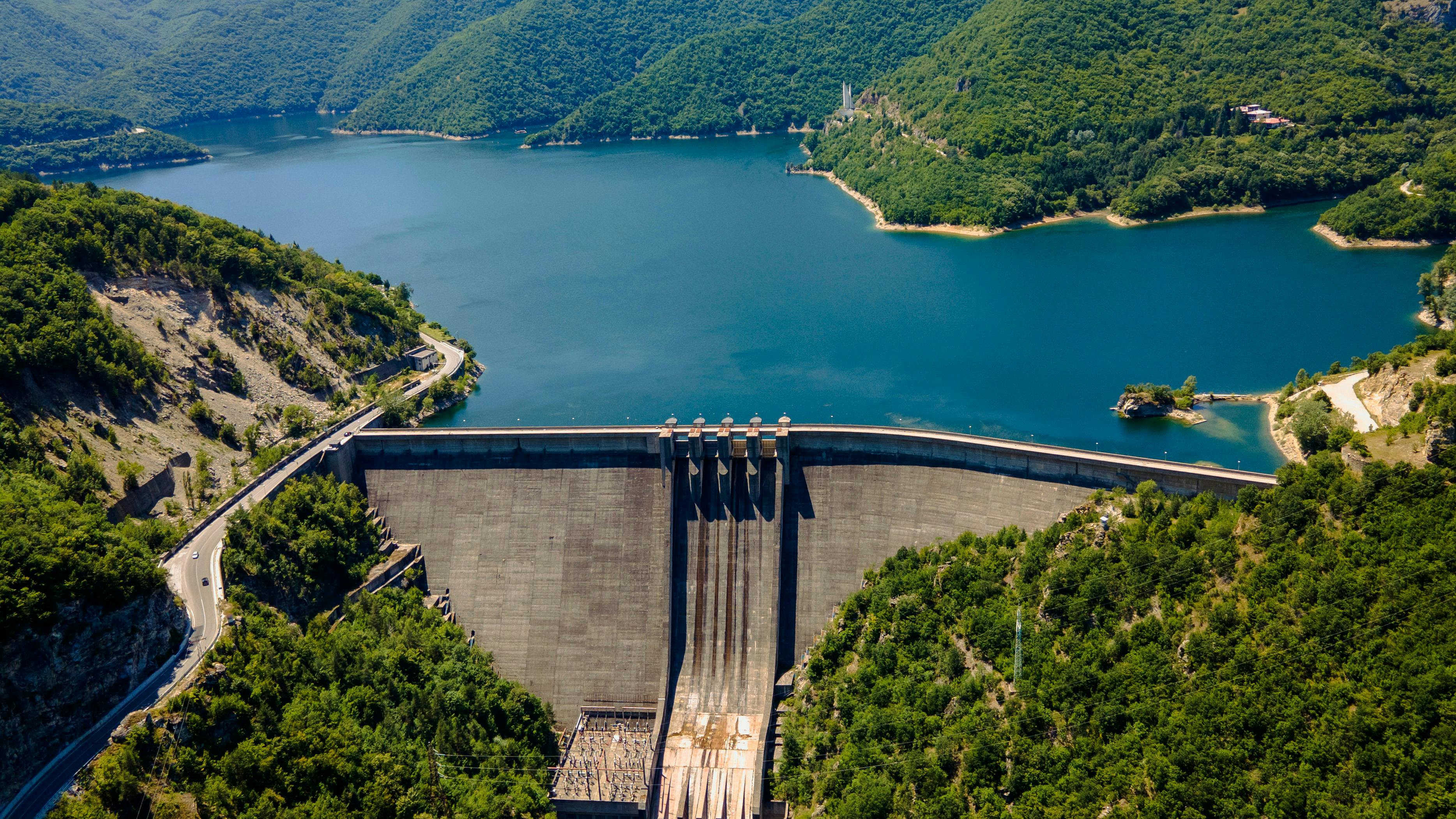
Dam, unless something blocks its path water will always flow downhill.
A useful analogy is to think of evolution like water flowing downhill toward the ocean. Water does not plan its path or have the ocean as an objective - it simply follows the route of least resistance, always moving downward. If it encounters a depression with no lower outlet, it pools to form a lake. Likewise, evolution is always "flowing" toward greater survival advantage, but it can only proceed where each incremental step provides an immediate benefit. If no advantage exists at a given stage, evolution cannot progress in that direction.
For decades, paleontologists have proposed questionable hypotheses on how vertebrates — such as pterosaurs, birds, and bats — evolved flight. Currently their favored idea is that some vertebrates hopped while flapping their partially formed wings until their wings eventually became large enough for true flight. However, this contradicts the principles of evolution — without an advantage gained at every step of the way, a species will not undergo the many generations of development needed to achieve functional wings or any other complex feature.
Because evolution proceeds only through a series of small, beneficial steps, the conditions must be favorable for a species to make the transition from land-dweller to flier. If the animal’s body is small enough and the atmosphere dense enough, the power requirements for flight can be met. For an arboreal animal that leaps between trees, almost any appendage that helps it reach other trees — either by gliding farther or by steering more effectively — could serve as the starting point. In such cases, these appendages gradually develop into wings and a guiding tail until, almost imperceptibly, the species becomes a flier.
Once a new species emerges as a flier, a whole new ecosystem opens up to it. From this point onward, continued evolution and diversification become possible. As these species adapt to fill the available niches in their new environment, they lose their resemblance to their ancestors while typically evolving into larger and more capable fliers.
For tiny insects, the transition to becoming fliers is possible no matter whether the atmosphere is extremely thick or relatively thin, as it is today. But for vertebrates, which are limited in how small they can be, the barrier presented by a thin atmosphere is too great: the power requirement is simply too high. Vertebrates can evolve into fliers only when the atmosphere is extremely thick. This contrast — between the relative ease with which insects can evolve flight and the difficulty faced by vertebrates — helps explain why flying vertebrates evolved only at certain times during the past half billion years.
For much of the Paleozoic era, Earth’s atmosphere was thick, but vertebrates were still bound to the water and not yet ready for the skies. By the time they finally adapted to life on land, they had missed their chance to become fliers because the air had thinned to nearly what it is today. In the Permian — the last period of the Paleozoic — swamps swarmed with arthropods and vertebrates, but only insects ruled the air. Flying vertebrates would have to wait until the Mesozoic before their next chance arrived.
Finally, during the late Triassic period the conditions were right for the evolution of flying vertebrates: first the pterosaurs, and later the birds. By the Cretaceous — the final period of the Mesozoic — these two groups had carved out their niches while competing for dominance of the skies.
The K–Pg mass extinction wiped out the pterosaurs and also marked the end of the Mesozoic era, but it did not mark the end of Earth’s thick atmosphere. The thick atmosphere continued through the first half of the Cenozoic era, and during this time many new species emerged, including the flying mammals — the bats.
Today the world may seem overrun with pesty arthropods, yet it would be far worse without flying vertebrates keeping their numbers in check — birds eating insects during the day and bats taking over at night. It was only because Earth’s atmosphere was previously much thicker that the evolution of these species was possible. Without this, there would be no flying birds or bats.
Evolution of Pterosaurs
Draco Lizards or Flying Dragons do not actually fly but instead they glide between trees as they search for food or avoid predators.
Today, in Southeast Asia, there are gliding reptiles known as Draco lizards, or Flying Dragons. These small reptiles glide from tree to tree by extending their elongated, skin-covered ribs to create a flat, aerodynamic surface. This ability allows them to save considerable time while foraging and helps them evade predators, both on the ground and in the trees. In addition to covering horizontal distances as they descend, these lizards can control their glide, enabling them to land precisely on their intended target — the trunk of a nearby tree. If the atmosphere were substantially denser, these gliding lizards would be well-positioned to evolve into true flying reptiles.
The earliest known gliding reptiles, Weigeltisaurus jaekeli, lived approximately 255 million years ago, near the end of the Permian period. These creatures were remarkably similar to modern Flying Dragons, spending their lives gliding from tree to tree. Like their present-day counterparts, they could not achieve powered flight. Similar to today, the atmosphere during the Permian was relatively thin, making it impossible for cold-blooded reptiles to generate enough power for sustained flight.
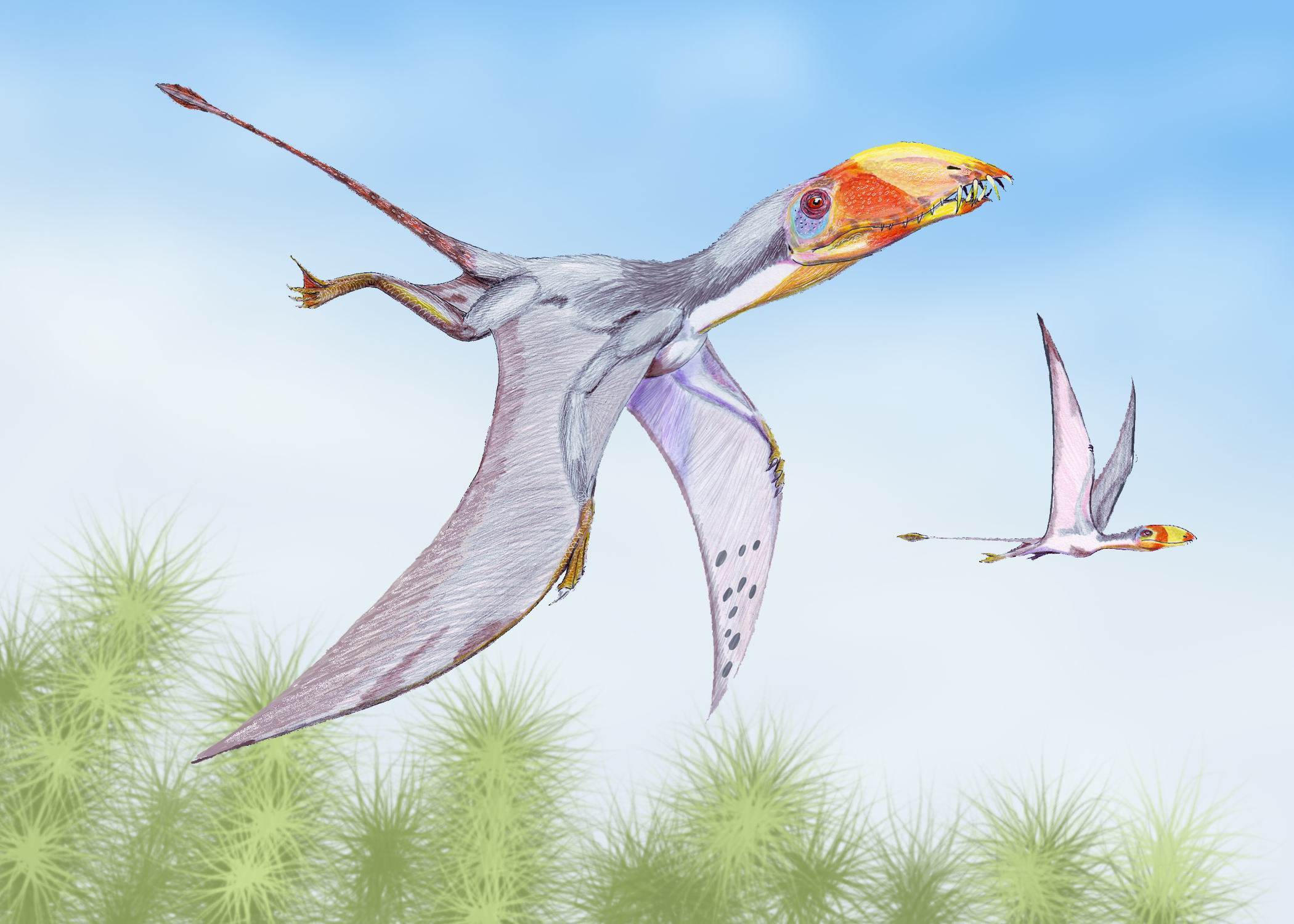
Rhamphorhynchoids were the first pterosaurs. They evolved during the late Triassic and went extinct during the Cretaceous. Drawing created by Dmitry Bogdanov - dmitrchel@mail.ru.
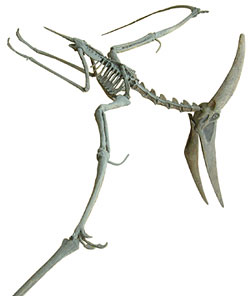
Pteranodons were large pterosaurs that evolved in the late Jurassic period and went extinct at the end of the Cretaceous period: 65 mya.
The Permian-Triassic Extinction, which marked the end of the Permian period, set the stage for vertebrate flight to evolve. This "mother of all extinctions" wiped out 96% of marine species, including those that had been removing carbon dioxide from the oceans and atmosphere. Meanwhile, volcanic activity continued to release CO₂, leading to a dramatic increase in atmospheric thickness over the next several million years. By the end of the Triassic period, life had recovered, and once again, reptiles were gliding between trees. However, this time, the much denser atmosphere significantly reduced the power requirements for flight, allowing some of these gliding reptiles to evolve into true flyers.
Heads or Tails?
Why did early pterosaurs have long tails, while later ones lost their tails and developed long, robust necks?
Any self-propelled object moving through a fluid needs directional control. This is usually at the rear, like a ship’s rudder or a bird’s tail feathers, which act as a wind vane. But in Pteranodons, control shifted to the front. Though less stable, this system let them steer simply by turning their heads: look right, turn right; look left, turn left. The drawback was that sharp turns, especially during dives, could place extreme stress on the neck. This likely explains why Pteranodons evolved such large, reinforced neck bones.
The gliding arboreal reptiles of the late Triassic period evolved around 230 million years ago, and just two million years later, Earth saw its first flying vertebrates. These early pterosaurs closely resembled their gliding ancestors, with the key difference being their significantly larger size and the development of wings attached to their forelimbs, enabling powered flight. These first pterosaurs, known as Rhamphorhynchoids, lived between approximately 215 and 145 million years ago.
Over time, pterosaurs generally increased in size from their initial evolution to their eventual extinction. The earliest group, the Rhamphorhynchoids, appeared during the late Triassic, around 215 million years ago. These were among the smallest pterosaurs and were characterized by their long tails and teeth. By the late Jurassic period, a new group of pterosaurs, the Pterodactyloids, had evolved. Unlike the Rhamphorhynchoids, Pterodactyloids had shorter tails and tended to be much larger, with most species having wingspans of about one meter (three feet).
Before the extinction of the Pterodactyloids in the early Cretaceous period, an even larger group of pterosaurs emerged: the Pteranodons. Many Pteranodons had wingspans ranging from five to seven meters. They differed from Pterodactyloids in several ways, including their long, robust necks, prominent cranial crests, and toothless beaks. Pteranodons first appeared in the late Jurassic and thrived throughout the later Cretaceous period.
One of the largest pterosaurs of all time was Quetzalcoatlus, which lived during the late Cretaceous. Similar in structure to Pteranodons but substantially larger, Quetzalcoatlus stood as tall as a giraffe and had a wingspan comparable to that of a small recreational airplane.
Ptroubling Pterosaurs
*Paleontologists are still refining the classification of pterosaurs, so some reference sources may differ from the classifications presented here. However, one point of consensus among paleontologists is that pterosaurs were not dinosaurs. Despite this, the distinction remains unclear to the public, as many non-academic sources continue to refer to pterosaurs as flying dinosaurs.
| Pterosaur* | Time Period | Wingspan (m) | Notes |
|---|---|---|---|
| Rhamphorhynchoids | Late Triassic and Jurassic |
0.25 to 1.0 | smallest pterosaurs long tail, teeth |
| Pterodactyloids | Late Jurassic | 1.0 to 1.5 | medium size short tail, teeth |
| Pteranodons | Cretaceous | 3 to 7 | large, toothless, robust neck, prominent crest |
| Quetzalcoatlus | Late Cretaceous | 11 | one of the largest flying animals of all time |
It was only a few million years after Pteranodons appeared that the smaller Pterodactyloids went extinct. However, it would be incorrect to assume that one type of pterosaur outcompeted the other. More likely, the recently evolved birds displaced the smaller pterosaurs. Sharing the same size range and environment, Pterodactyloids could not compete with the superior flying abilities of warm-blooded birds. Meanwhile, the larger Pteranodons survived and even thrived by avoiding direct competition with birds. While agile birds flew through trees or just above them in search of prey or seeds, Pteranodons soared high above, possibly circling like vultures as they waited for carrion. Soaring requires minimal energy, making the slower, cold-blooded metabolism of pterosaurs an advantage for this type of flight.
Pterosaurs, dinosaurs, and birds coexisted throughout the Jurassic and Cretaceous periods. However, at the end of the Cretaceous — the close of the Mesozoic era — pterosaurs went extinct along with the dinosaurs.
Theories on How Pterosaurs Were Capable of Flying
Paleontologists incorrectly assume that Earth’s atmosphere has remained unchanged over time, leading them to struggle in explaining how pterosaurs flew. Their lack of training in physics and aerodynamics further hinders their understanding. Instead of focusing on whether the pterosaurs’ wings could generate enough lift, paleontologists make dubious claims about pterosaurs’ ability to launch themselves into the air with powerful leaps. But suggesting that pterosaurs flew by jumping skyward is no more scientific than telling a child that Superman flies by leaping into the sky. Not only is it easy to disprove the idea that large pterosaurs could leap as claimed, but even if they could, the discussion is irrelevant to determining whether a pterosaur could fly.
Achieving flight requires several factors, but the most fundamental is that an animal or airplane must generate enough power or forward thrust for its wings to produce lift equal to its weight.
Paleontologists have struggled in their efforts to explain how the pterosaurs flew.

DC Comics first suggested that Superman could fly by taking a giant leap while shouting 'Up, up, and away!' Now, paleontologists claim that pterosaurs took flight by making a similar super leap into the sky.
The Mesozoic era presents several paradoxes, the most familiar to the public being how dinosaurs grew so large and how gigantic pterosaurs managed to fly. While the enormous size of dinosaurs is an oddity obvious even to a child, to anyone familiar with the requirements of flight, the existence of gigantic flying reptiles is an even stronger indication that something was fundamentally different about the Mesozoic era. Yet without an understanding of physics, most people cannot explain how birds or airplanes fly, and so it is unsurprising that many fail to recognize the absurdity of believing a giant reptile could fly in an atmosphere as thin as today’s.
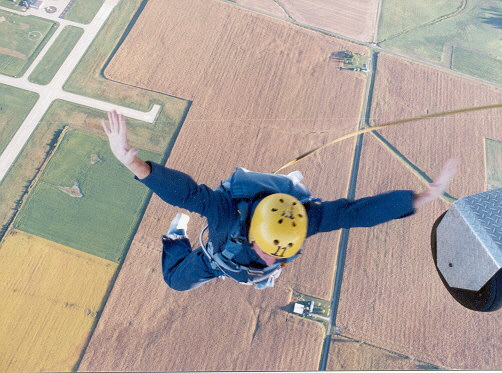
The author puts his trust in physics — and his parachute — as he leaps from a perfectly good airplane.
It is not surprising that the public has difficulty explaining flight or recognizing the absurdity of believing pterosaurs could fly in today’s atmosphere; even many aeronautical engineers still struggle to give a clear explanation of how airplanes fly. As explained in Chapter Three on flight, although the Wright brothers achieved flight in 1903, it was not until 2008 that I derived and published the Science of Flight Equations. These equations provide the long-sought after, concise theoretical explanation of how airplanes and flying animals are capable of flight.
To meet the requirements for flight an animal needs to have wings, a means of guiding their flight, and enough power to create the lift needed to overcome the downward force of gravity. Animals that glide between trees are usually capable of fulfilling the first two requirements. However while they are airborne they typically cannot generating power or at least enough power so as to achieve true flight. How much power is needed so that an arboreal glider can evolve into a flyer mostly depends on the density of the atmosphere.
Now, let’s examine the flight equations that demonstrate how the dense atmosphere of the Mesozoic era facilitated the evolution of flying pterosaurs.
The much thicker atmosphere of the Mesozoic era made flight easier for pterosaurs in two distinct ways. First, as with dinosaurs, the dense atmosphere created a buoyant force that reduced the effective weight of the pterosaurs. Second, because lift is generated by accelerating air downward, a denser atmosphere required less power to achieve the necessary lift.
The calculation of effective weight begins by summing the forces acting on a pterosaur submerged in the thick atmospheric fluid and applying algebra, yielding the following equation:
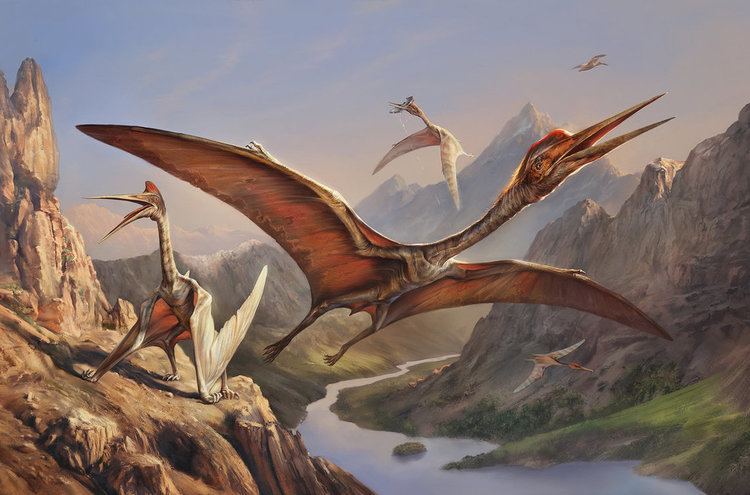
Quetzalcoatlus
where:
- N is the effective weight (i.e., the required lift),
- Fg is the actual weight,
- ρF is the density of the surrounding fluid (the thick atmosphere), and
- ρS is the density of the pterosaur.
Although the exact density of pterosaurs is unknown, it was likely similar to that of most vertebrates, approximately the density of water: 1000 kg/m³. Using estimated values for Quetzalcoatlus, which had a weight of 7000 N and lived during the Cretaceous period when air density was around 660 kg/m³, its effective weight is calculated to be approximately 2380 N.
The greatest potential source of error in these calculations comes from estimating the pterosaur’s metabolism. While it is well established that reptiles generally have lower metabolic rates than mammals, the fundamental differences between exothermic reptiles and endothermic mammals make precise comparisons difficult. For now, metabolism in reptiles is estimated to be typically about five times lower than that of mammals of equivalent size. Using this assumption, the available power for Quetzalcoatlus is calculated to be approximately 0.36 kW.
With these corrected values, they can now be inserted into the flight equations to determine Quetzalcoatlus’ take-off speed, minimum power, and power ratio, showing how these values differ depending on whether the atmosphere is thick or thin.
![v_min = [(2 W^2) / (3 A C b^2 ρ^2)]^1/4](flight_eq21.gif)
![P_T-min = 4/3 [ W^2 / (b^2 ρ v_min)]](flight_eq22.gif)
| Flyer | Weight (N) |
Front Area Estimate (m2) |
Drag Coefficient Estimate (Front Area) |
Wingspan (m) |
Speed for least Power (m/s) |
Minimum Power for Flight (kW) |
Available Power (kW) |
Power Ratio |
|---|---|---|---|---|---|---|---|---|
| Quetzalcoatlus Thin Atm |
7000 | 2.5 | 0.50 | 12 | 18 | 20 | 1.8 | 0.09 |
| Quetzalcoatlus Thick Atm |
2380 | 2.5 | 0.50 | 12 | 0.47 | 0.17 | 0.36 | 2.2 |
As explained in the flight chapter, the minimum required power ratio for flight is 1.0 and to maneuver and maintain altitude in real-world conditions, airplanes and flying animals must exceed this threshold. With a power ratio of 2.2, Quetzalcoatlus was a capable flyer in the dense Mesozoic atmosphere.
While this analysis primarily focuses on how large pterosaurs generated enough power for flight, it also addresses another challenge: how Quetzalcoatlus physically managed to run fast enough to takeoff and then later slow down enough to safely land.
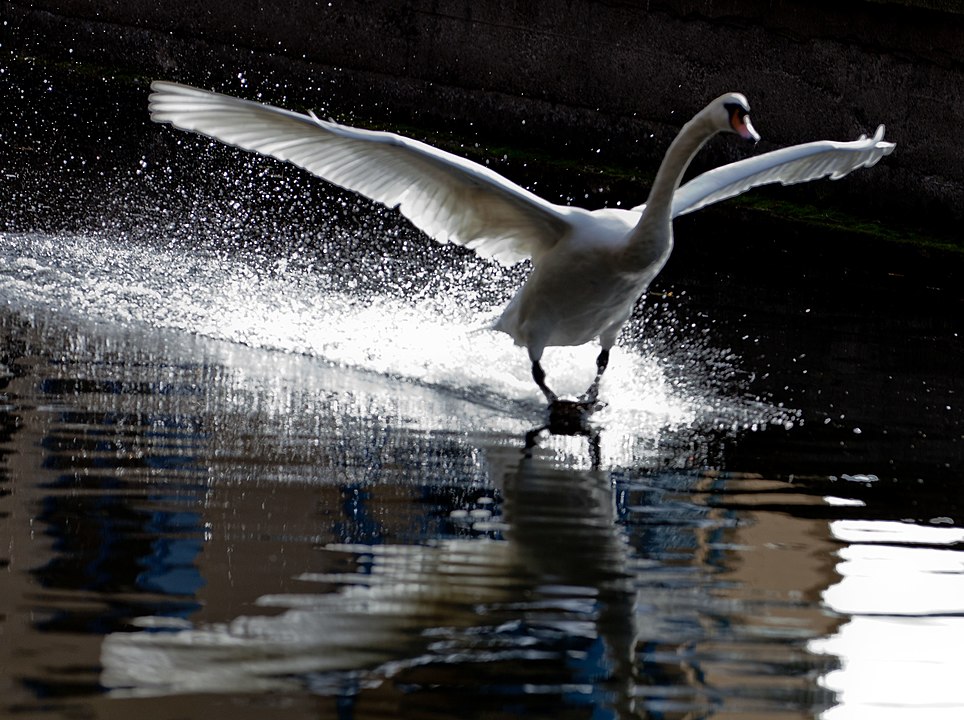
Mute Swan dragging its feet in the water to slow itself down as it lands on the water.
In general, the larger a flying vertebrate or airplane, the faster it must travel to take off or land safely. While small birds or bats can simply hop into the air before flapping their wings, at the other extreme the largest jet airplanes must reach speeds over 100 mph to lift off. The same principle applies to landings, where increasing weight typically requires higher approach speeds. The wheels that airplanes use to takeoff or land are well-suited for high-speed travel. However, in contrast, the short legs of many large vertebrates limit how fast they can run. Some heavy birds - especially those with narrow wings — struggle to reach takeoff speed or must use special techniques to slow down when landing. To give an example: although the albatross is revered as a graceful flyer, it sometimes fails to gain enough speed for takeoff, and then after it gets into the air its attempt to land can sometimes be rough and comically clumsy.
The thick Mesozoic atmosphere not only reduced the power required for Quetzalcoatlus to fly but also made takeoff and landing far easier. If Quetzalcoatlus had to fly in today’s atmosphere, imagine the impossibility of it running at 18 m/s (40 mph) or the number of bones it would break upon landing at such a speed. Fortunately, in the extremely thick atmosphere of the late Cretaceous, Quetzalcoatlus had no such difficulties. It needed to move at only about half a meter per second (1 mph) to take off or land.
From their evolution 215 million years ago to their extinction 66 million years ago, pterosaurs grew from small flying reptiles to the largest creatures ever to take to the skies. This remarkable evolutionary achievement was only possible because Earth’s atmosphere was significantly thicker during the Mesozoic era.
Details about Dinosaurs
T-Rex Hunting its Prey
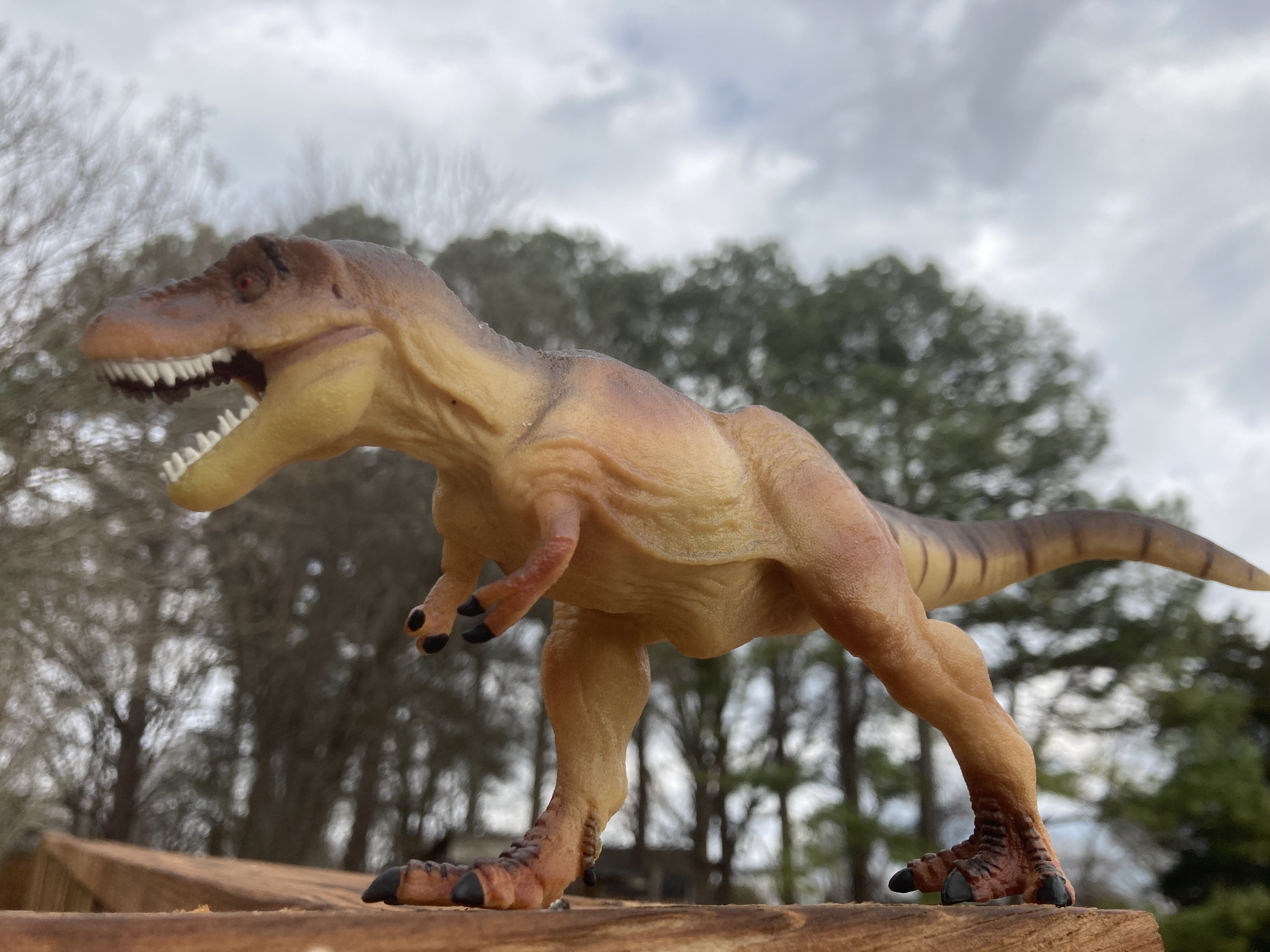
Oh my, this T. rex is a lean, mean killing machine! Check out its extremely slim waistline and tail, its beefy calves, and ... what is that thing protruding from between its legs?
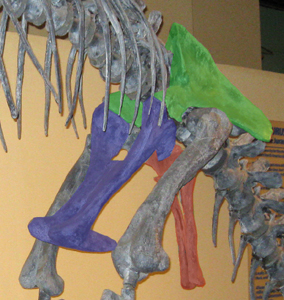
Pubis bone is colored blue.
Like the thick vertebrae in a pterosaur’s neck, some dinosaur features stand out as particularly odd. The odd feature of a T. rex is the pubis bone—it literally sticks way out from the hip. When reconstructing T. rex, paleontologists stretch the skin over this protrusion so much that it resembles an embarrassed boy at prom night. It’s… a boner.
Of course, despite being a bone, it is not a "boner" — this structure was present in both male and female T. rex. The existence of such a large, unexplained bone should spark curiosity in any competent scientist. Yet paleontologists seem to treat it as little more than a nuisance. They depict T. rex with an unnaturally skinny frame to downplay the paradox of dinosaurs being too heavy, but this protruding bone makes their model even less believable.
This T. rex skeleton is displayed at the Denver Museum of Nature & Science. The pubic bone supported T. rex as it lay in a prone position, while its extremely long, powerful tail propelled it forward. This adaptation allowed T. rex to slide along its body while sneaking up on its prey.
So what was its purpose? Since the pubis was as thick as — or possibly thicker than — the femur, it could have supported the animal’s full weight, allowing it to rest on its stomach without crushing its internal organs. But what if T. rex did more than just lie still? What if it could slide?
For many predators, stealth is critical — they must get as close as possible before launching an attack. Big cats crouch low, crawling forward until they’re either detected or close enough to strike. Crocodiles drift slowly beneath the water’s surface before lunging at unsuspecting prey.
Since modern predators use stealth to sneak up on their prey, would it not make sense for T. rex to do the same? It would have walked upright while searching for prey since its upright posture would maximize the distance that it could travel and the distance that it could see, hear, or smell its prey. But once a target was spotted, its best chance of success was to stay low so it could get close without being seen. The pubis bone could have supported its weight as it rested on the ground, while its long, muscular tail enabled it to slither forward like a “snake in the grass.” Once near enough, a powerful lunge to its feet, a short sprint, and a crushing bite would have sealed the kill.
Details about Dinosaurs
How the Thick Atmosphere Solves the Paradox of How Dinosaurs Grew so Tall

Three drawings of Brachiosaurus showing hypotheses trying to explain how its heart pumped blood to its head
One of the most perplexing scientific paradoxes discussed in Chapter 2 was how the tallest dinosaurs, such as Brachiosaurus and Sauroposeidon, were able to manage the extreme blood pressure required to pump blood from their hearts to their elevated heads. The hydrostatic pressure due to height is calculated using the equation P = ρ g h, where P is the required pressure difference, ρ is the density of the fluid (in this case, blood, at about 1060 kg/m³), g is gravitational acceleration (9.81 m/s²), and h is the height difference between the heart and the head. For a dinosaur like Brachiosaurus, whose head may have been 9 meters above its heart, this calculation suggests a minimum required systolic blood pressure of approximately 600–700 mmHg, far higher than that of any known living animal today.
As noted in Chapter 2, the tallest land animals today — giraffes — have evolved numerous adaptations to meet the challenge of pumping blood to their heads. Weighing about 25 pounds (11 kg), a giraffe’s heart is much larger and more muscular than what would typically be expected for an animal of its size. Additionally, giraffes have a heart rate of 40 to 90 beats per minute, roughly twice the heart rate of horses (28–40 bpm) and other animals of comparable weight.
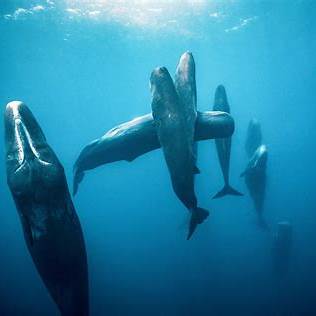
Sperm whales float vertically when they sleep.
The way deep-ocean sperm whales sleep offers insight into how dinosaurs could have reached such great heights. Sperm whales get their name from spermaceti, a low-density, waxy substance that fills most of their massive heads, which make up about one-third of their bodies. As they sleep, the buoyancy of this substance causes them to rotate into a vertical position, with their heads pointing toward the surface. Whales are similar in size and mass to the largest dinosaurs, and if they were on land, this upright posture would create extreme strain on the heart due to their blood’s hydrostatic pressure. However, because they are submerged in water, the surrounding fluid counteracts the effects of gravity, preventing any increase in hydrostatic pressure. As a result, despite their vertical position, their hearts can still function at a reduced pace, allowing these sperm whales to achieve restful sleep.
While the extremely thick Mesozoic-era atmosphere did not eliminate hydrostatic blood pressure in dinosaurs, it greatly reduced it, allowing them to grow to towering heights. In a medium with a density closer to 660 kg/m³, the effective weight of blood in the circulatory system would be significantly reduced due to buoyant forces. The hydrostatic equation is then modified to account for this effect:
This adjustment means that the effective pressure difference the heart must generate is no longer determined solely by the density of blood, but by the difference between blood density and the surrounding atmospheric density. If the surrounding medium had a substantial density, it would offset much of the gravitational force acting on the blood column. Applying this equation to Brachiosaurus, the predicted required systolic blood pressure would drop to only 250–300 mmHg — similar to that of modern giraffes and well within the plausible physiological range for large terrestrial animals.
Details about Dinosaurs
Were Dinosaurs Warm or Cold Blooded?
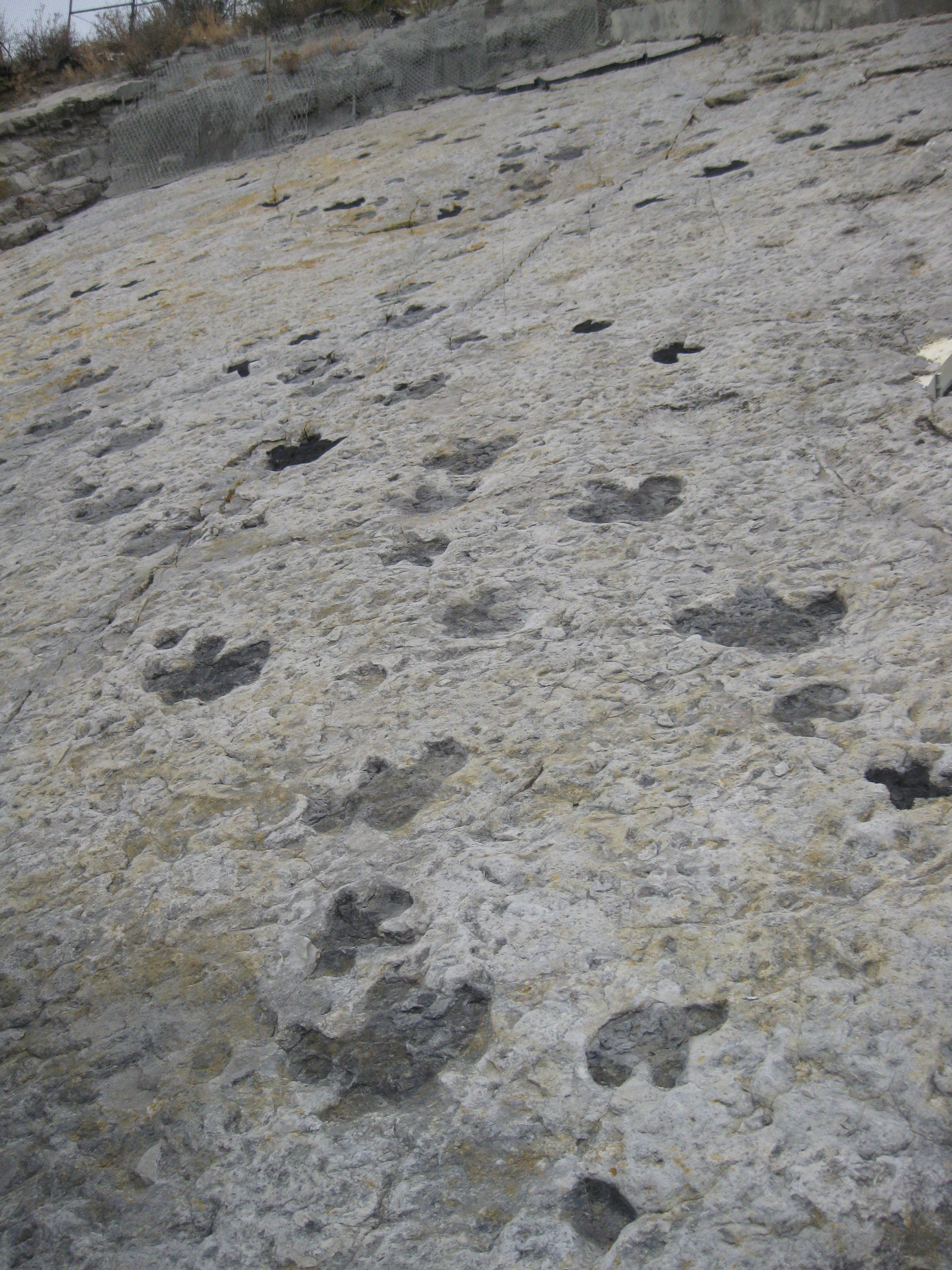
These dinosaur tracks are found at Dinosaur Ridge that is located on the west side of Denver, Colorado.
The spacing of dinosaur tracks suggests that many large species trotted rather than lumbered slowly, indicating a higher metabolism. This has led some paleontologists to propose that dinosaurs were warm-blooded (endothermic). However, endothermy is unnecessary in consistently warm climates and could even be undesirable. For example, cold-blooded (ectothermic) fish in warm waters remain highly active due to the surrounding temperature, which is similar to how dinosaurs might have been active in a thick, warm atmosphere.
The warm-blooded hypothesis also creates problems. Large endothermic animals must dissipate excess heat to avoid overheating. Modern mammals, like elephants and whales, use various methods to stay cool, such as flapping their ears or seeking cooler waters. If dinosaurs were warm-blooded, larger species should have preferred cooler latitudes, but no such distinction is observed.
Generally, ectothermic metabolism thrives in consistently warm climates, while endothermic metabolism is suited for cooler climates with wide temperature fluctuations. The thick Mesozoic atmosphere created a climate characterized by steady warmth over the entire planet; this supports the belief that dinosaurs were most likely ectothermic (cold-blooded).
The Diminishing Atmosphere's Effect On Terrestrial Vertebrates
Cenozoic Era 66 mya to Present Time
The K-Pg extinction, occurring approximately 66 million years ago, marked the end of the Mesozoic era and the beginning of the Cenozoic era. This cataclysmic event wiped out the dinosaurs and pterosaurs, paving the way for the evolution and diversification of dramatically different terrestrial vertebrates.
Many of the largest dinosaurs existed right up until the extinction event, indicating that the atmosphere was still extremely thick at the time. However, species that evolved after the extinction show little evidence of living in an environment with such a dense atmosphere. While many dinosaurs were enormous in height and mass, the largest terrestrial vertebrates of the Cenozoic era were only slightly larger than the largest present-day terrestrial animals. This suggests that during the Cenozoic era atmospheric buoyancy played a much smaller role in enabling gigantism than what occurred during the Mesozoic era. Furthermore, with the atmosphere no longer as thick, vertebrates no longer required disproportionately large hind legs or powerful tails to push themselves through the fluid-like air. Instead, most Cenozoic vertebrates evolved more evenly sized limbs, and their tails became vestigial or disappeared altogether – the difference in form being another indication that the atmosphere was no longer nearly as thick.
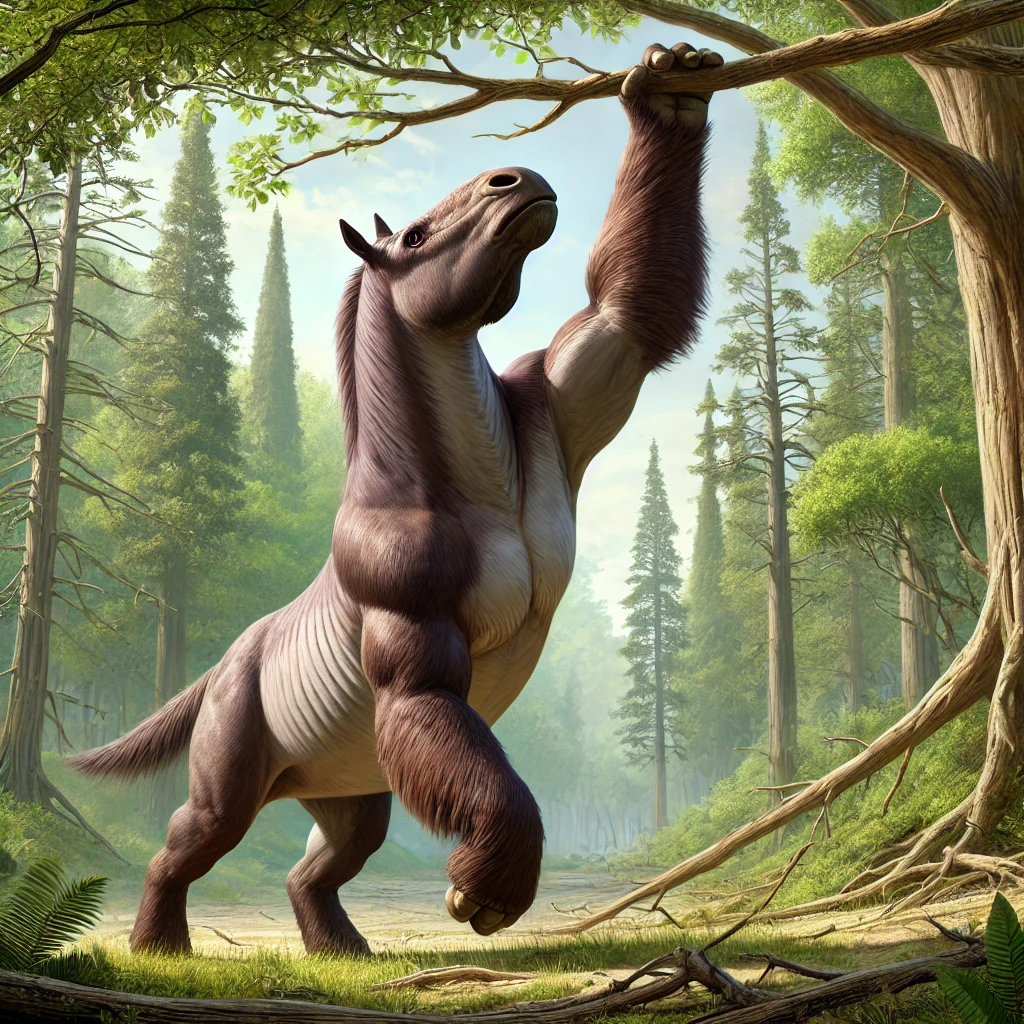
Chalicotherium was a herbivore that resembled a horse and yet it had gorilla-like forearms. It was one of the many strange creatures that existed during the middle of the Cenozoic era
The dominance of mammals in the Cenozoic era further underscores the climatic differences between the Mesozoic and Cenozoic eras. During the Mesozoic, the thick atmosphere created minimal temperature variation — day and night, summer and winter, lowlands and mountaintops, or even equatorial low latitude regions compared to Polar Regions all maintained roughly consistent temperatures. Such stable climates strongly favored ectothermic vertebrates. In contrast, climates with more pronounced temperature variation favor endothermic vertebrates like mammals. During the Mesozoic era, mammals were few in number and barely survived. However, in the Cenozoic era, mammals thrived due to their hairy coats and insulting layer of fat enabling them to maintain a constant warm interior body even though the environment’s temperature fluctuated and often became extremely cold. These traits made mammals better suited to the diverse and thermally unsteady climates of the modern world.
Nearly as soon as the K-Pg extinction was over, Earth’s atmosphere began rapidly diminishing; in doing so it transitioned from being extremely thick to the relatively thin atmosphere it has today. As the density of the atmosphere decreased, newly evolved Cenozoic species slowly grew in size. It was not until about the middle of the Cenozoic era that the largest terrestrial vertebrates finally reached the size of the largest modern-day vertebrates. By this time, the atmosphere had thinned so much that it offered only a small amount of buoyancy to lighten the load of these animals. Consequently, even though many large and strange mammals evolved during this time, only a few exceeded the height and mass of present-day giraffes and elephants.
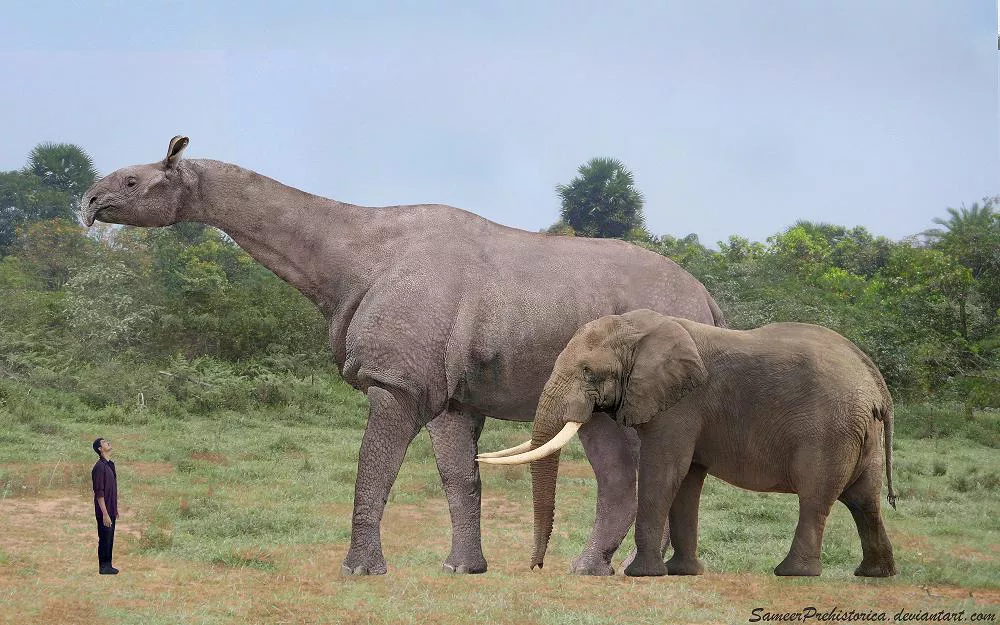
The Paraceratherium was about sixty percent larger than the present day largest terrestrial animal the African elephant. Created by Sameer Prehistorica.
The largest known terrestrial mammal of the Cenozoic era was Paraceratherium, a towering, rhinoceros-like herbivore. This genus has been referred to by multiple names over time, including Indricotherium and Baluchitherium, though Paraceratherium is now the most widely accepted. Due to the incompleteness of fossil remains, its exact size is debated. Nevertheless, it is estimated to have stood over 7 meters tall—taller than a modern giraffe—and its mass is estimated to have been between 15 and 20 metric tons, about three times heavier than an African elephant. It thrived for millions of years before going extinct approximately 23 million years ago.
During the middle of the Cenozoic era, particularly during the Oligocene and Miocene epochs, several exceptionally large terrestrial vertebrates lived alongside Paraceratherium. Here are a few notable examples:
- Deinotherium
A massive relative of modern elephants, Deinotherium could reach up to 4 meters (13 feet) tall at the shoulder and weighed around 10–14 metric tons. - Chalicotheres
These large, unusual herbivores, such as Anisodon and Moropus, were relatives of horses and rhinos. They had long claws for pulling down branches and were about the size of a modern horse or larger, with some species standing over 2.5 meters (8 feet) tall at the shoulder. - Gomphotheres
An early group of elephant-like mammals, gomphotheres were widespread and reached sizes comparable to modern elephants. Some species, such as Gomphotherium, had both upper and lower tusks and could weigh around 4–6 metric tons. - Hyaenodon gigas
One of the largest predatory mammals of the time, this member of the extinct Hyaenodontidae family grew to lengths of over 4 meters (13 feet) and likely weighed up to 500 kg (1,100 lbs). It was a top predator, preying on large herbivores. - Entelodonts ("Hell Pigs")
Giant omnivorous mammals like Daeodon could reach lengths of over 3.6 meters (12 feet) and weigh up to 1 metric ton. These robust animals had powerful jaws and a fearsome appearance.
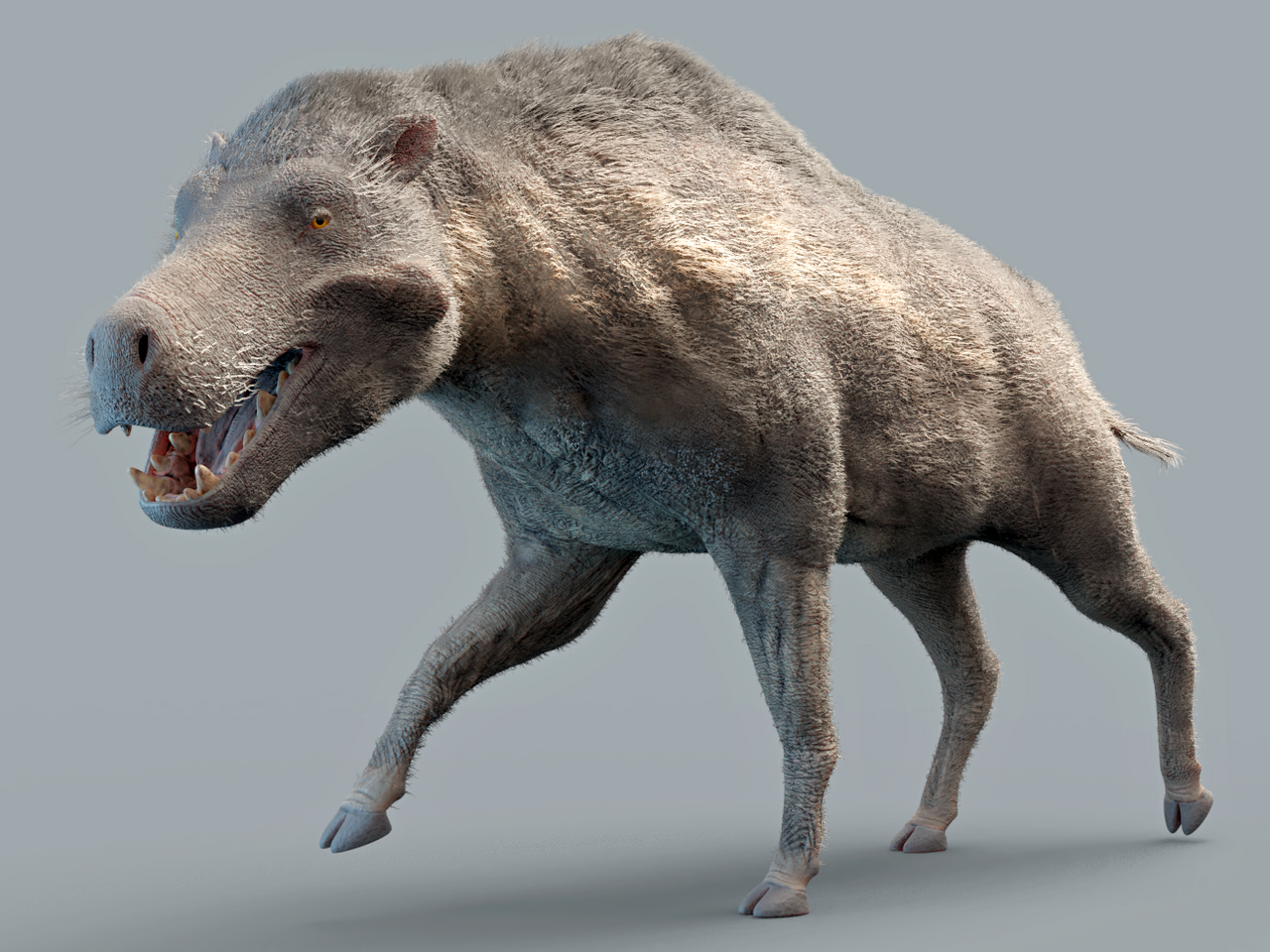
Daeodon was a giant omnivorous mammal that weighed up to a metric ton. By Max Bellomio.
These animals represent the diversity of large terrestrial vertebrates that thrived in the warm, forested environments of the middle Cenozoic. It was during this time that glaciation began—a process that intensified later in the Cenozoic as the atmosphere continued to thin.
The strange large mammals of the middle Cenozoic era gave way to the Ice Age mammals that have a closer resemble to modern species:
- Giant Ground Sloths
These massive, ground-dwelling sloths grew up to 6 meters (20 feet) long and weighed over 4 tons. They used their large claws for defense and foraging. - Saber-Toothed Cats
Powerful predators with long, curved canines designed for slicing through thick hides. The largest species could weigh up to 400 kg (880 lbs). - Giant Otters
Some prehistoric otters grew to the size of leopards, making them apex semi-aquatic predators with few natural enemies. - Giant Beavers
These Ice Age beavers reached lengths of up to 2.5 meters (8 feet) and could weigh over 100 kg (220 lbs). - Woolly Mammoths
Large, elephant-like mammals that thrived during the Ice Age. They were covered in thick fur and had a substantial layer of fat for insulation. Evidence suggests that early humans likely hunted these magnificent animals to extinction.
Although these animals were large, their size is impressive primarily in comparison to their modern relatives. During the Ice Ages, the atmosphere could not have been significantly thicker than it is today. Consequently, as is true today, the slight buoyancy provided by the thin air would not have been a meaningful factor in enabling these animals to grow larger.
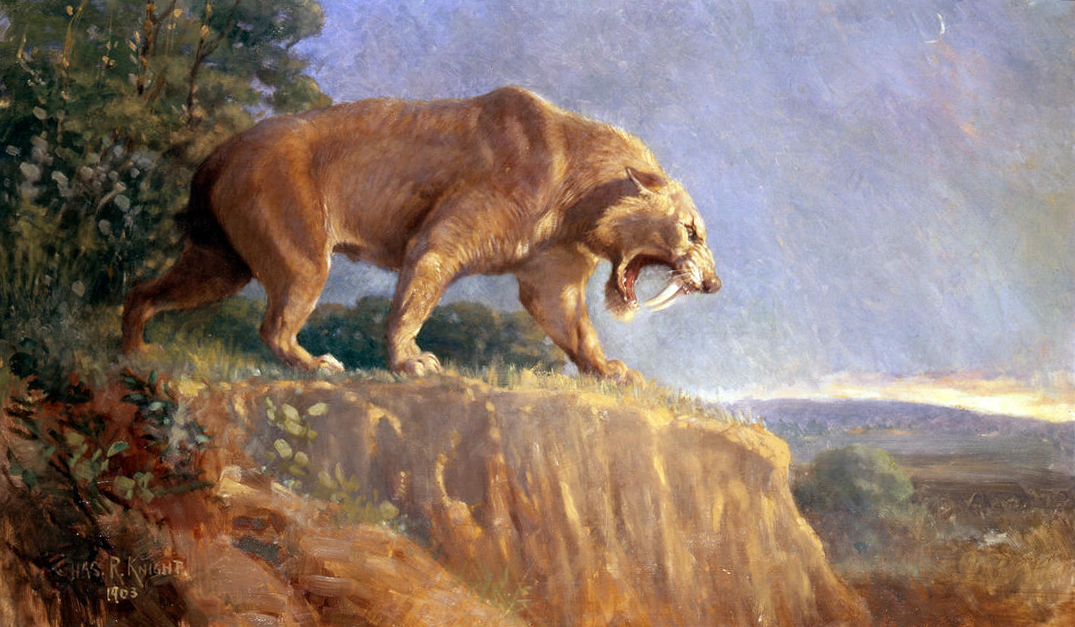
ainting of a Saber-Tooth Cat – Smilodon populator – created by Charles Robert Knight.
While woolly mammoths were slightly larger than modern elephants, this increase in size was primarily due to their adaptation to a much colder environment. According to the Square-Cube Law, the need to retain heat in cold climates favors the evolution of larger species since larger animals have a lower surface-area-to-mass ratio. For example, it is no coincidence that polar bears — the massive white bears of the snowy, ice-covered Polar Regions — are by far the largest modern bears. Similarly, the coldness of their environment drove many, if not all, Ice Age mammals to grow larger.
These large Ice Age animals moved more slowly and were more prone to broken bones than their smaller relatives. Nevertheless, these disadvantages were a worthwhile tradeoff for the critical advantage of retaining warmth in frigid conditions.
In comparison to today’s atmosphere, the slightly thicker Ice Age atmosphere had little effect on most terrestrial vertebrates, but it was a different story for flying animals. Even a small difference in atmospheric density is extremely significant for flight. This is because the power required for flight is inversely proportional to air density, meaning thicker air greatly reduces the power needed for flight and enables larger flying animals to exist.
During the late Cenozoic era, the atmosphere was roughly 10, 20, or 30 times thicker than it is today. Even this relatively modest increase in density facilitated the evolution of birds that were exceptionally large compared to the flying birds of today. Argentavis magnificens was similar to the modern Andean Condor, except that its wingspan was at least twice as wide. Similarly, Pelagornis sandersi was a seabird like the Wandering Albatross, but its wingspan measured around 6.4 meters, compared to the Albatross’s 3.6-meter wingspan.
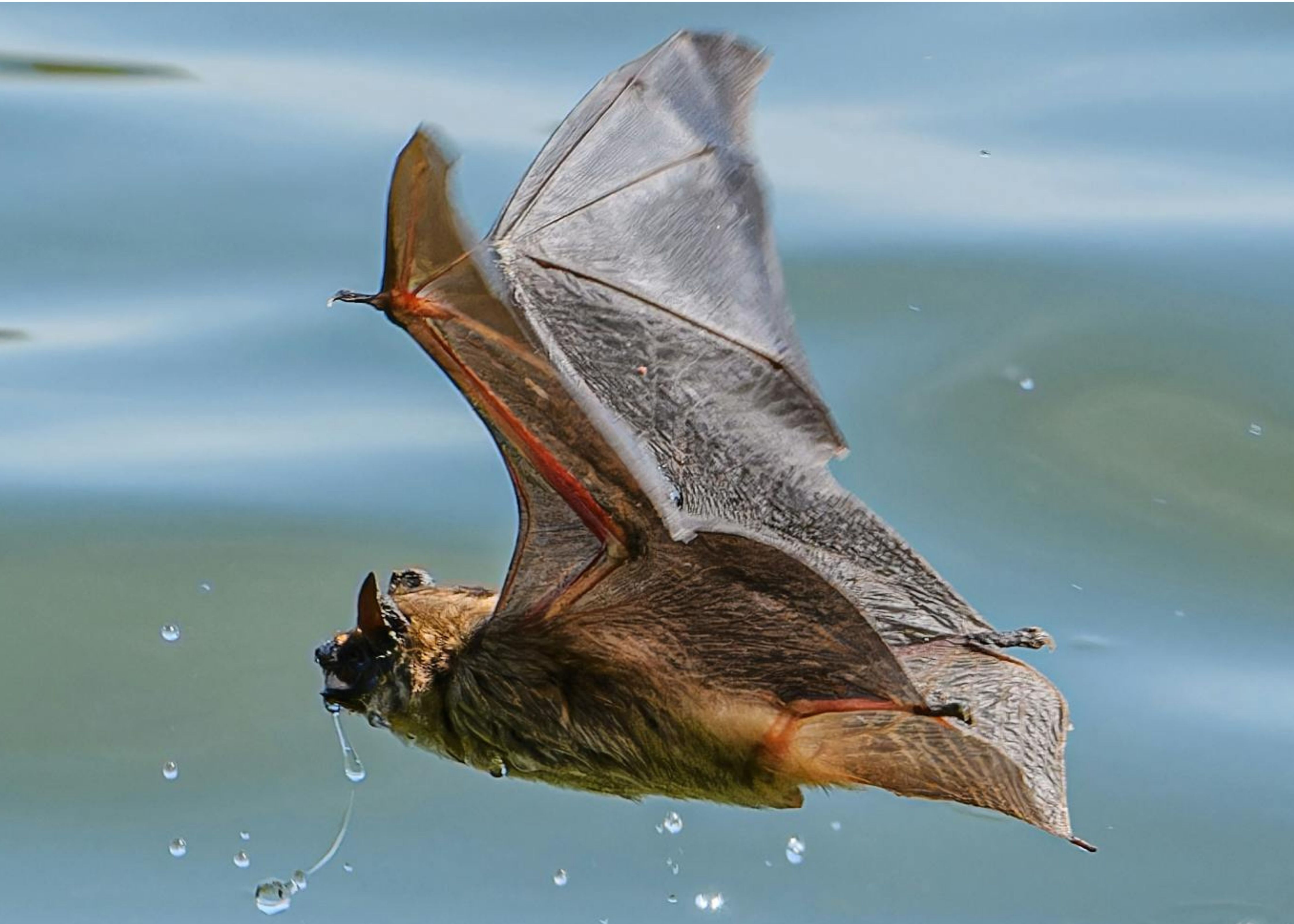
Flying Bat. Photo by Petr Ganaj.
Today, we are fortunate to have birds that help keep insect pests from bugging us during the day, as well as flying mammals — bats — that consume many of the insects that might bother us after dark.
It is no coincidence that bats evolved during the early part of the Cenozoic era. Bats appeared approximately 52 million years ago, not long after the K-Pg extinction. This was a time when the atmosphere was still relatively thick. Around 14 million years after the extinction event, new terrestrial vertebrates were beginning to fill the ecological niches left vacant by the species lost during the mass extinction. With no pterosaurs and fewer birds, the skies were largely open to newcomers. Furthermore, the dense atmosphere of the early Cenozoic made flight significantly easier, enabling tree-climbing rodents to evolve into flyers.
Because birds are more aerodynamic, have a higher metabolism, and possess a superior respiratory system, they are better fliers compared to bats. Several bird species take advantage of this disparity by preying on bats, particularly during the twilight minutes between day and night. Fortunately for bats, soon after they evolved the ability to fly, they also developed echolocation, which allows them to navigate and hunt at night. By flying at night and using echolocation, bats can avoid most predatory birds while still successfully hunt for flying insects.
The thickness of the atmosphere plays a fascinating role in shaping the size and form of terrestrial animals, but the atmosphere’s density is even more critical in determining the size and shapes of flying animals. While this chapter has provided an introduction to the flight characteristics of pterosaurs and bats, it has only briefly touched on the undisputed masters of flight in our world: birds. These remarkable flyers are explored in greater depth in the next chapter: The Evolution of Birds.
External Links / References
Species Interactions With Each Other and the Environment: Ecology
- Species Interactions - Libre Text
- Keystone Species in an Ecosystem - National Geographic
- Understanding Global Change - Berkeley
- Evolutionary Adaptations of Species Impact Their Environment - Sci Teck Daily
- Intro to Ecology - Libre Texts
- What Is Ecology? - Ecological Society of America
Monster Terrestrial Arthropods of the Carboniferous and Permian Periods
- Pulmonoscorpius - Dinopedia
- Car-Size Millipede - Live Science
- Arthropleura - Furman University
- Largest Fossil Cockroach - Ohio State University
- Cockroaches are not 300 million years old - Entomology Today
- Meganeura - Furman University
- 10 Astounding Things You Should Know About the Dragonfly - Tara Wildlife
Largest Insects and Spiders
- Ten Largest Insects on Earth - Our Planet
- Ten of the Worlds Largest Spiders - Conservation Institute
Difference between Terrestrial Arthropods and Terrestrial Vertebrates
- A Vertebrate Looks at Arthropods - Barbara Terkanian
- How Lungs Work - American Lung Association
- What Are the Functions of the Spiracles? - Sciencing
- 13 Advantages and Disadvantages of Exoskeletons - Brandon Miller
- Understanding Evolution: Small Size - University of California Museum of Paleontology
Evolution of Flying Vertebrates
- The Evolution of Flight - Berkeley
- Evolution of Flight - Fullerton
- Evolution of Flight - Science World
- The Physics of Flight - Berkeley
Leaping Lizards
- Gliders of the Prehistoric World - Darrwin's Door
- Flying dragon lizard - Australian Geographic
- Flight of Dragons - Lazy Lizard Tales
- Flying Lizard - Ten Random Facts
Pterosaurs
- Rhamphoryncoids and Pterodactyloids - Hooper Museum
- Pterosaurs Taxonomy - The Pterosaur Database
- Vertebrate Flight - University of California at Berkeley
- Quetzalcoatlus - New Dinosaurs
- ‘Rhamphorhynchoids’ and Pterodactyloids - Dave Hone
- Facts about pteranodon and other pterosaurs - Live Science
- Meet the Pterosaur Flock - Chicago Field Museum
- Difference Between a Pteranodon and a Pterodactyl - Reference
- pteranodon and other pterosaurs - Live Science
- The flying reptiles - Berkeley
- Pterosaur - Britannica
Endothermic and Ectothermic (Warm and Cold Blooded) Vertebrates
- How Does Temperature Affect Metabolism? - Sciencing
- Endotherms & Ectotherms - Khan Academy
- Phylum Chordata Characteristics - Online Biology Notes
- Mongoose vs. Cobra - Animal Facts Encyclogedia
- Metabolism and Enzymes - libretexts
- Factors Affecting Enzyme Action - BBC
- How Cells Obtain Energy from Food - National Library of Medicine
- Evidence for Endothermy in Dinosaurs - DinoBuzz Berkeley
